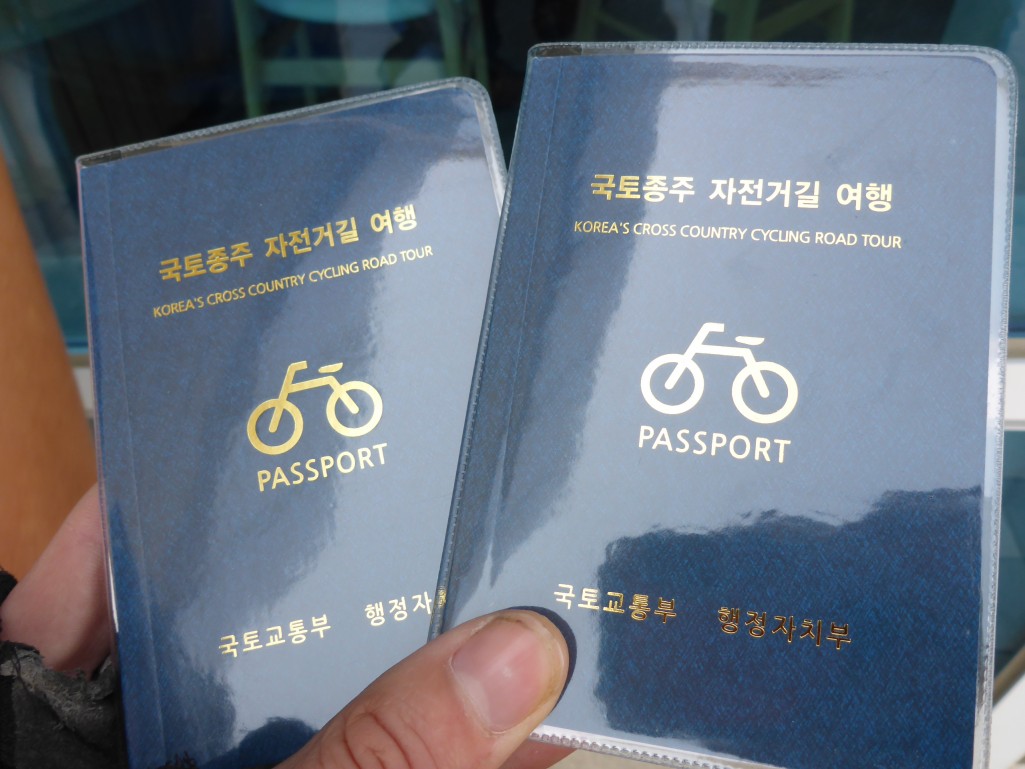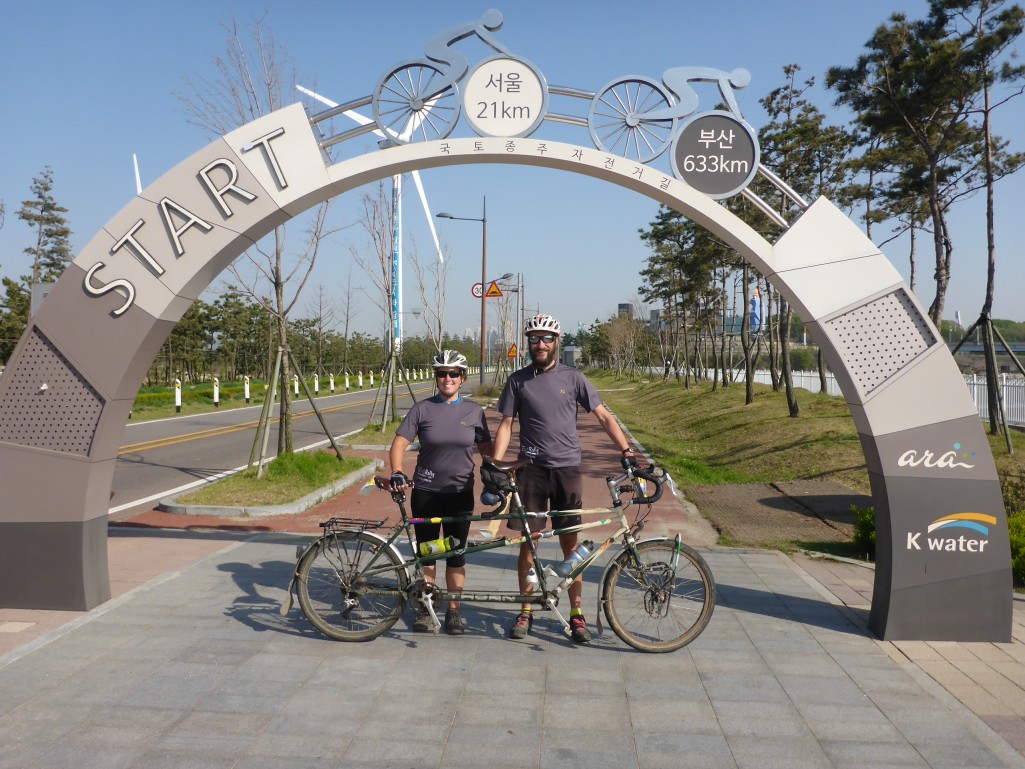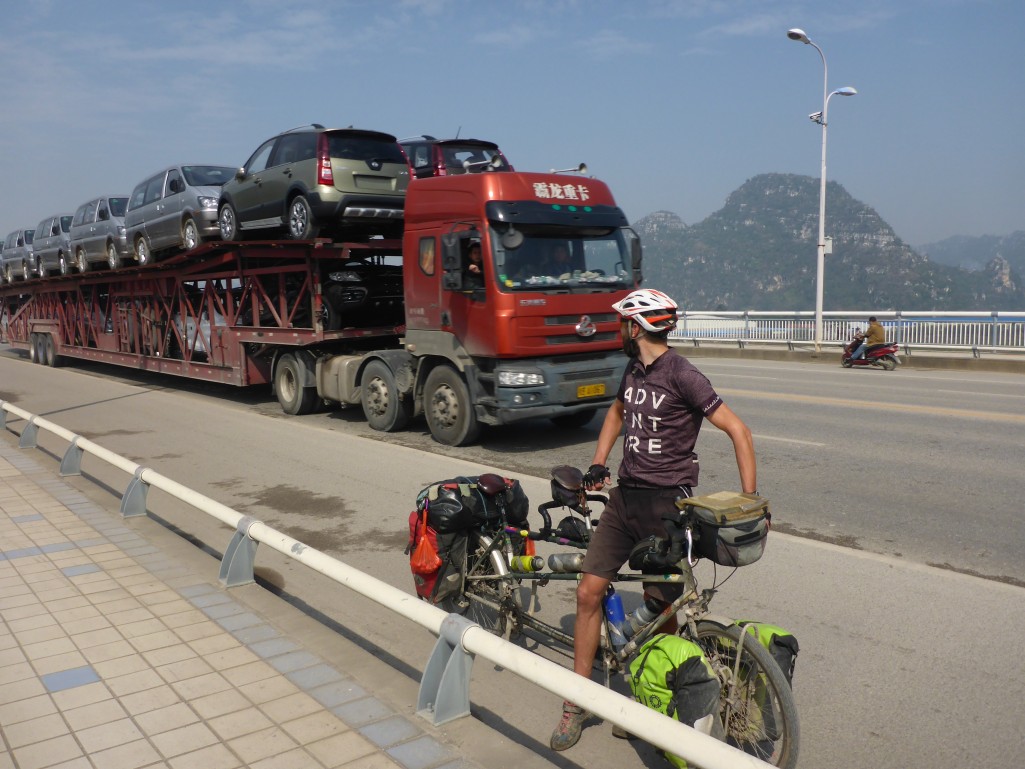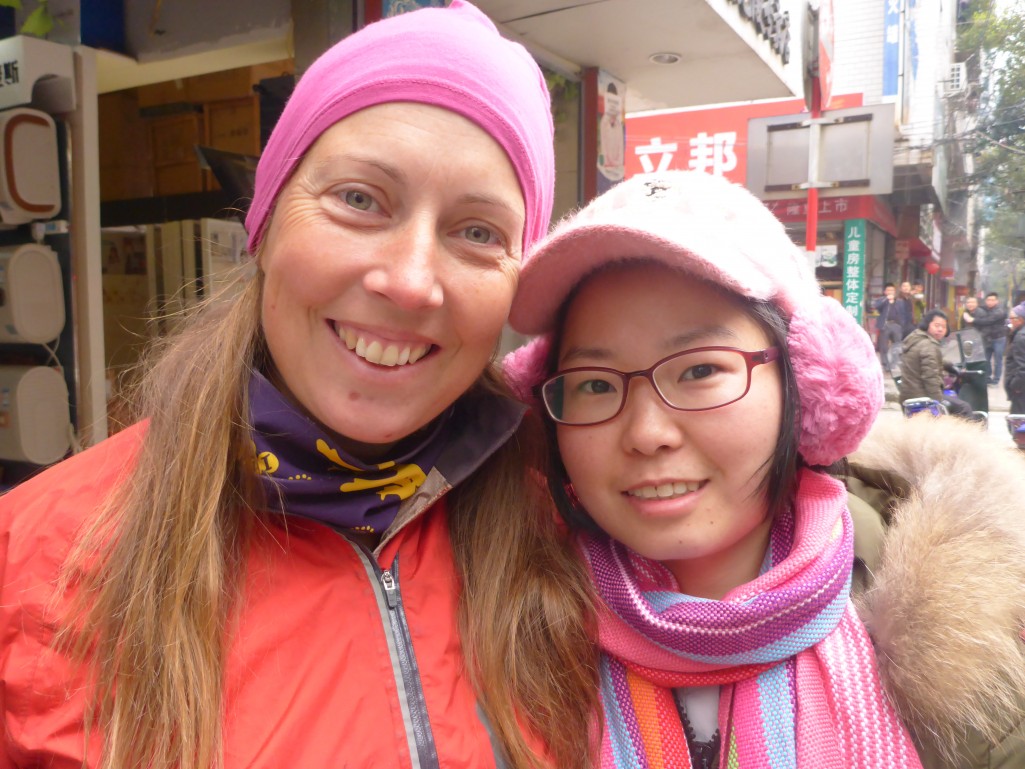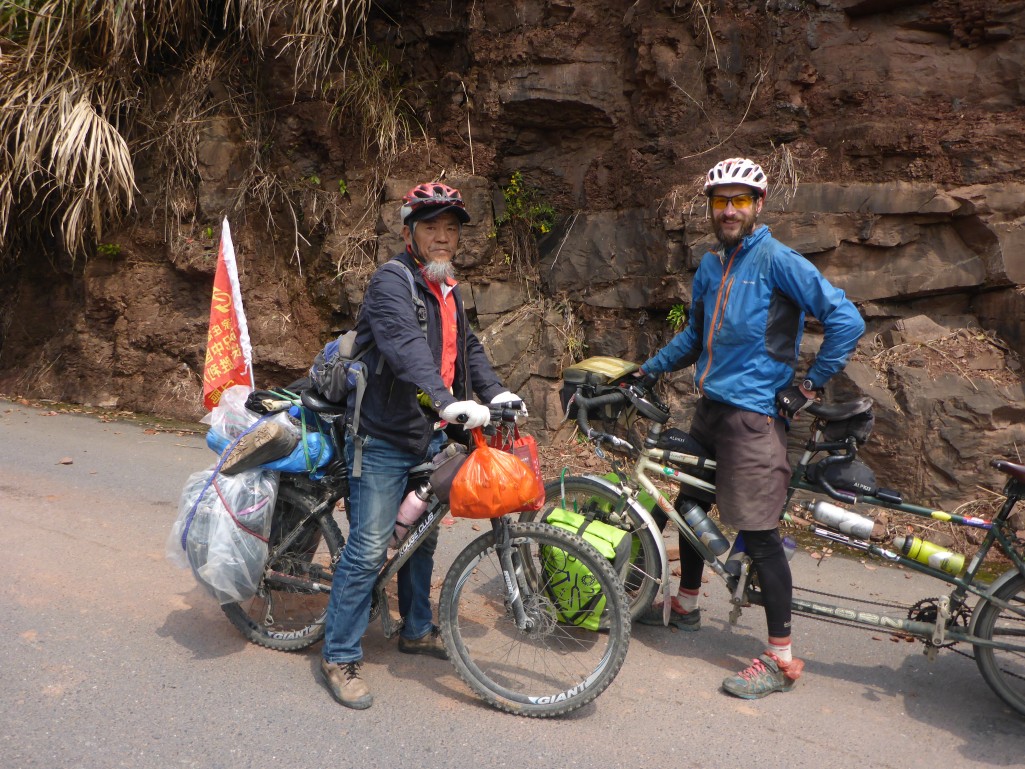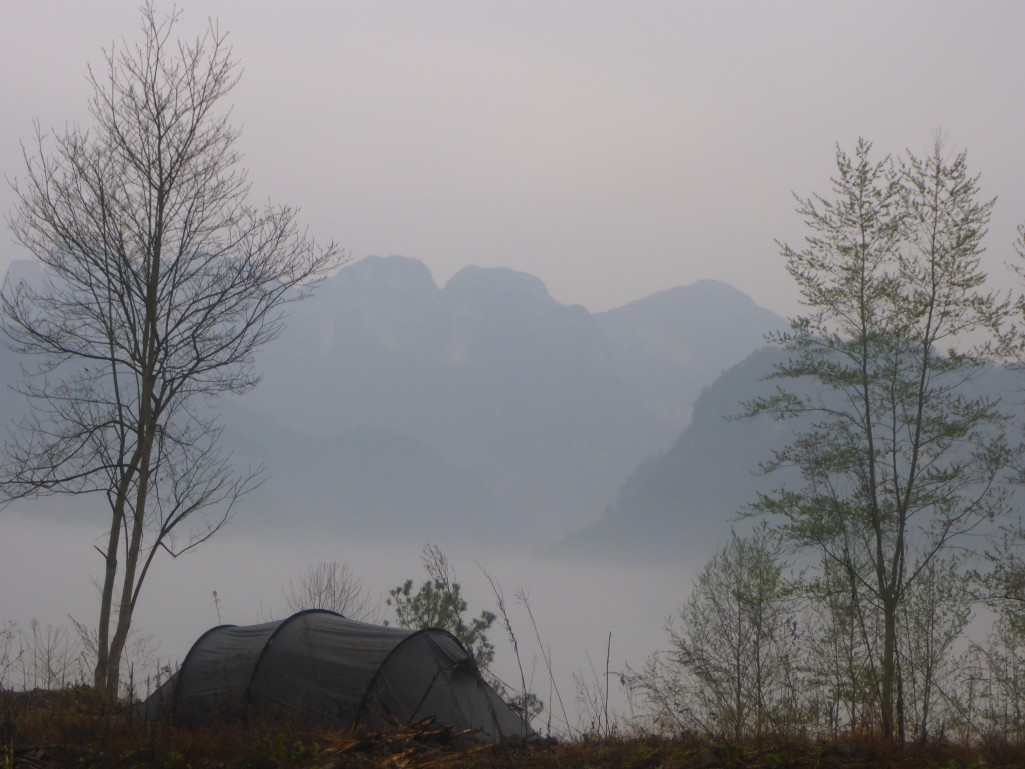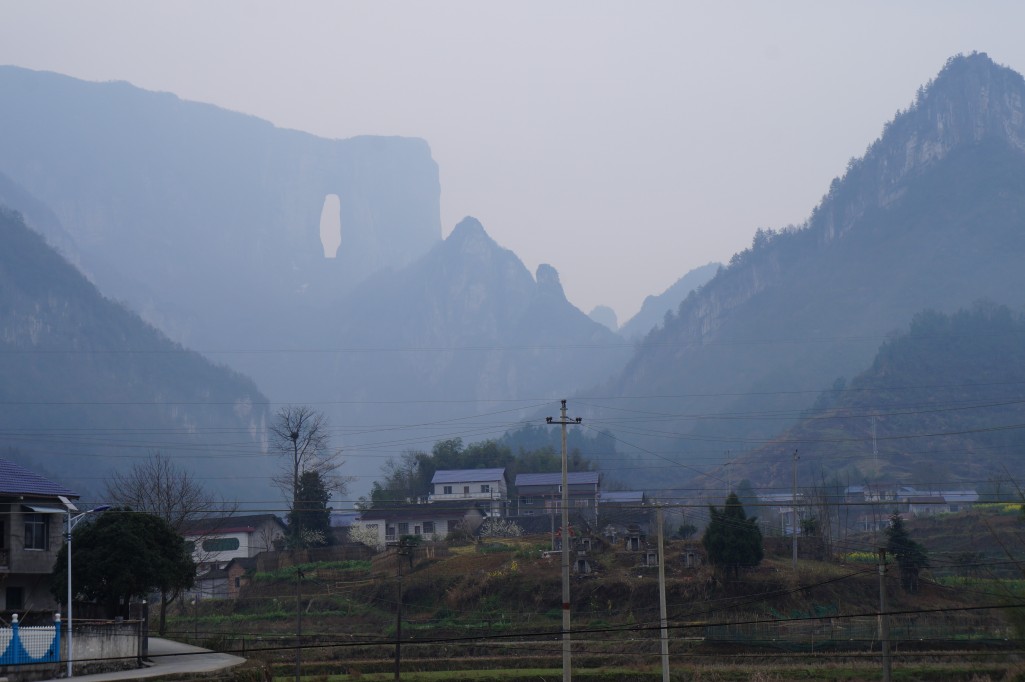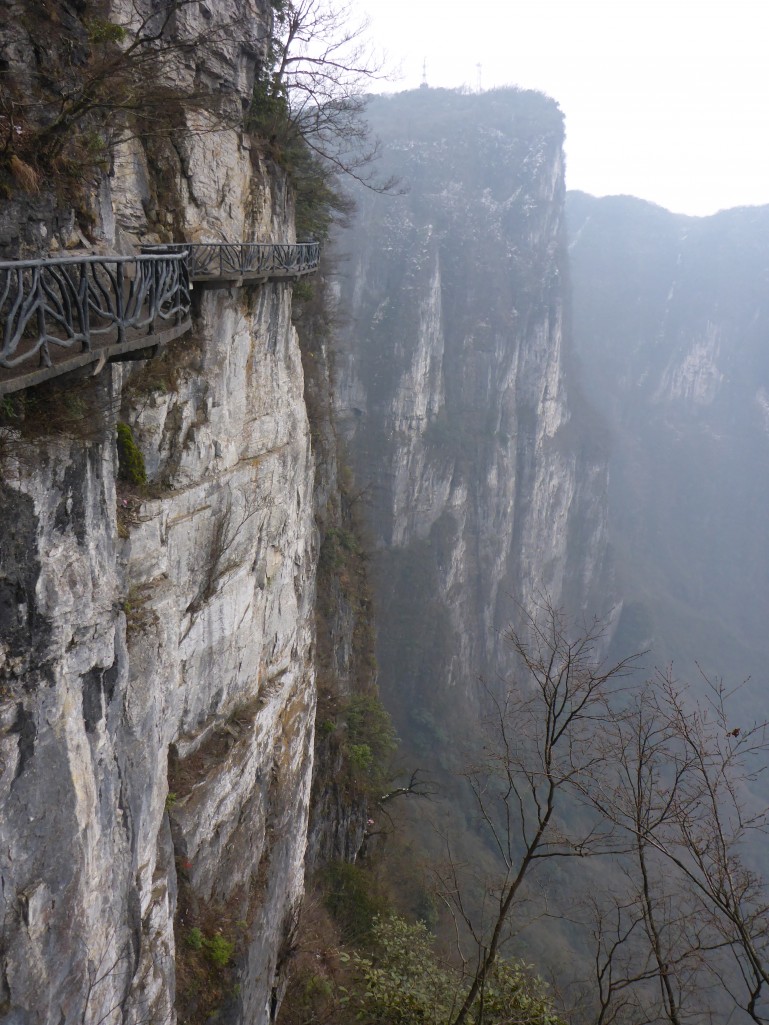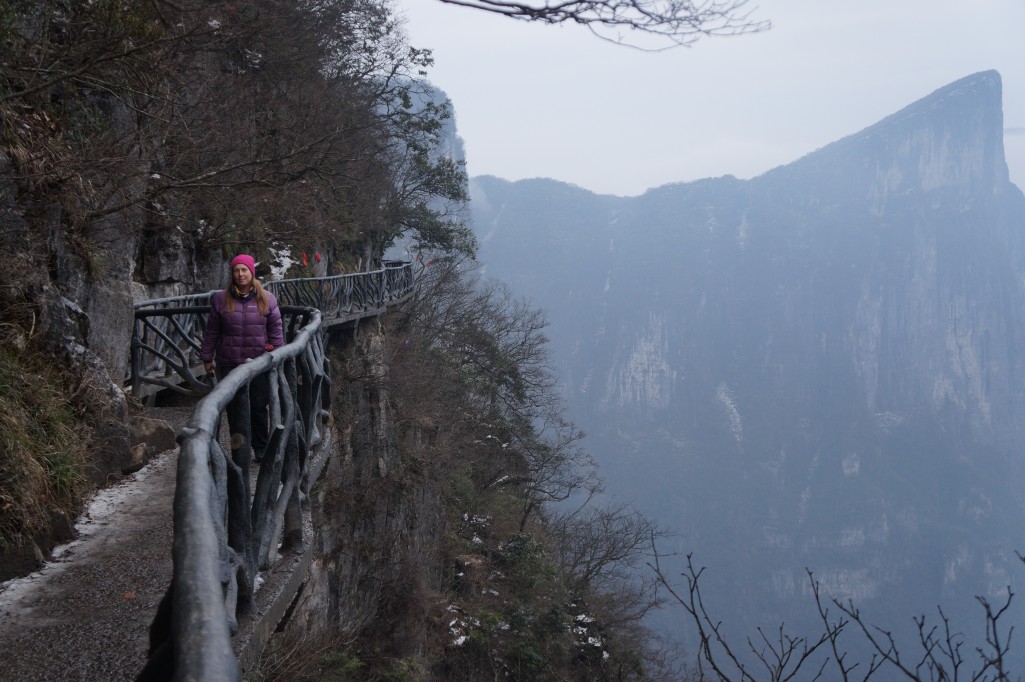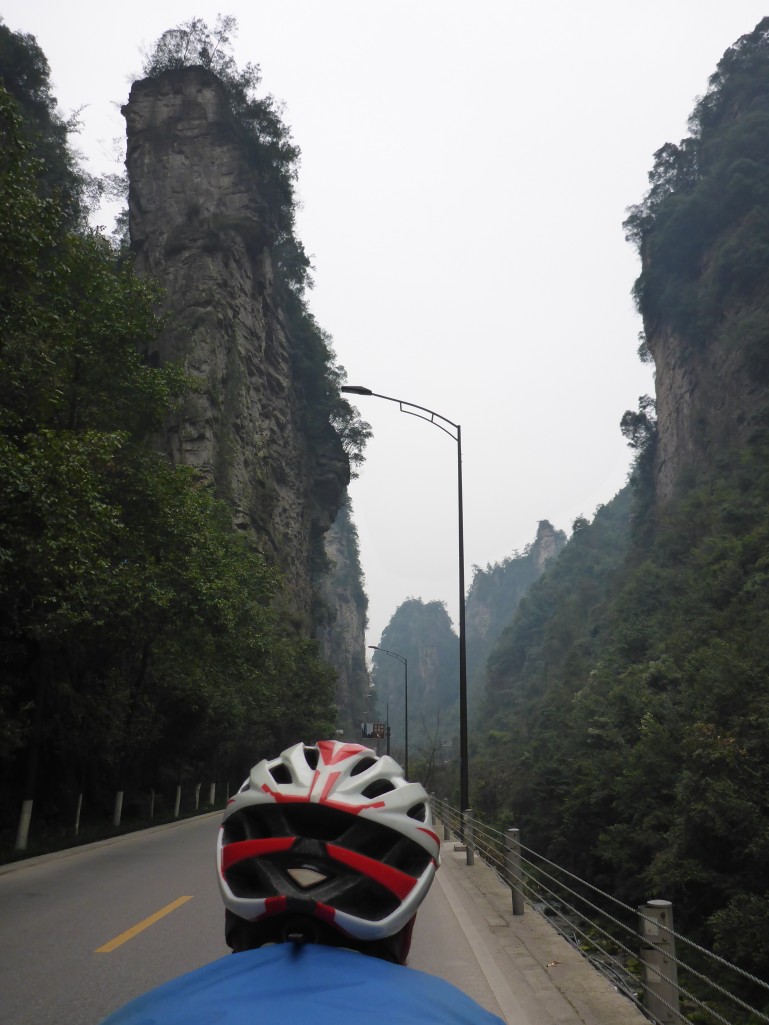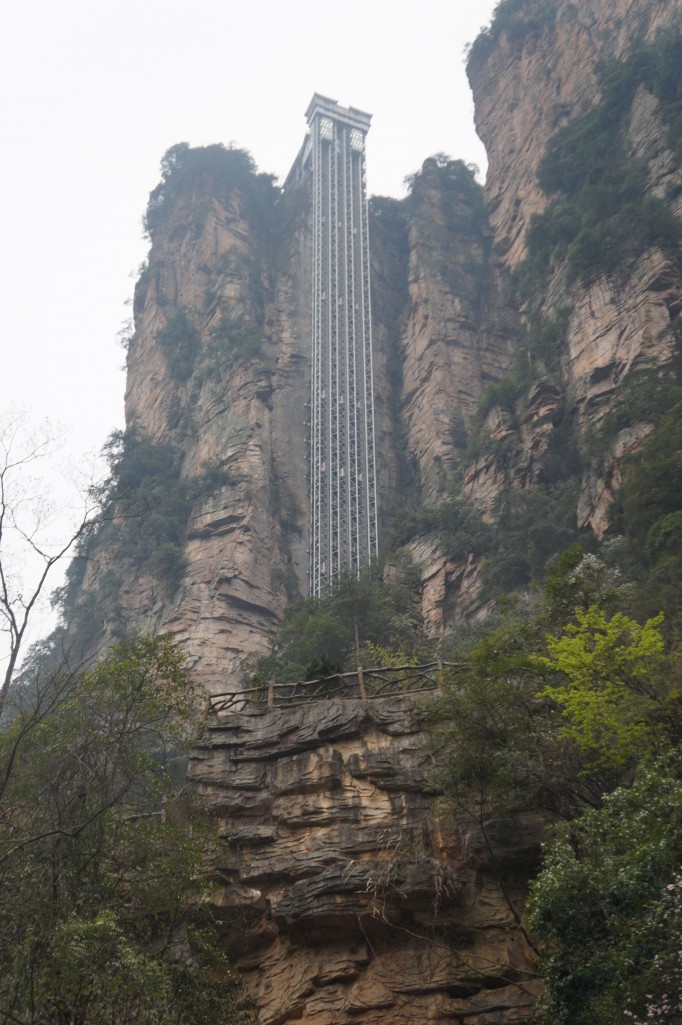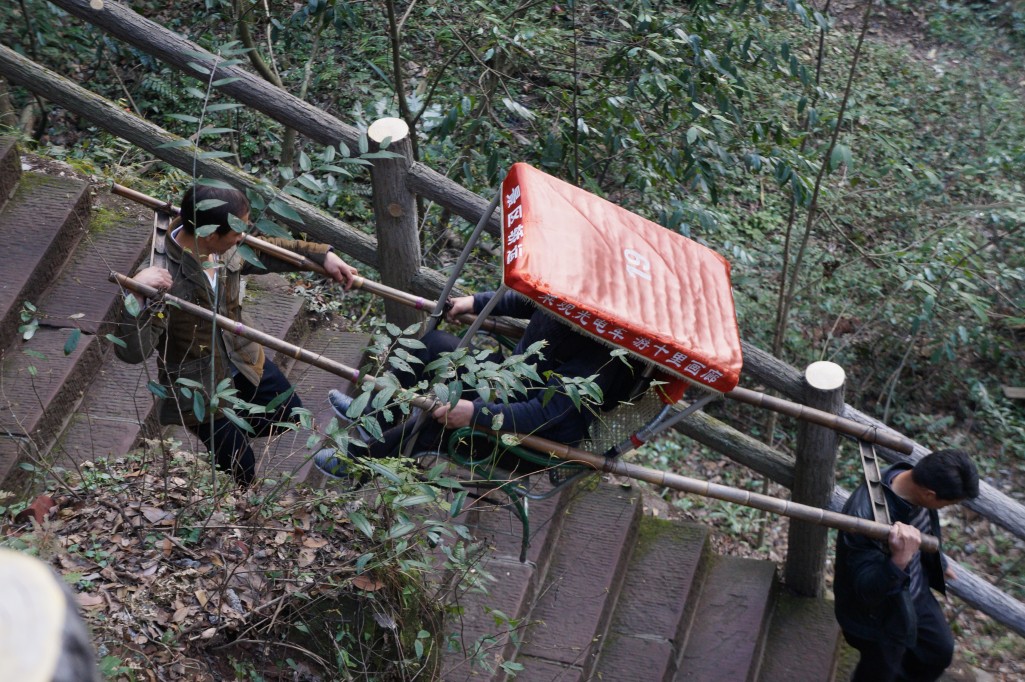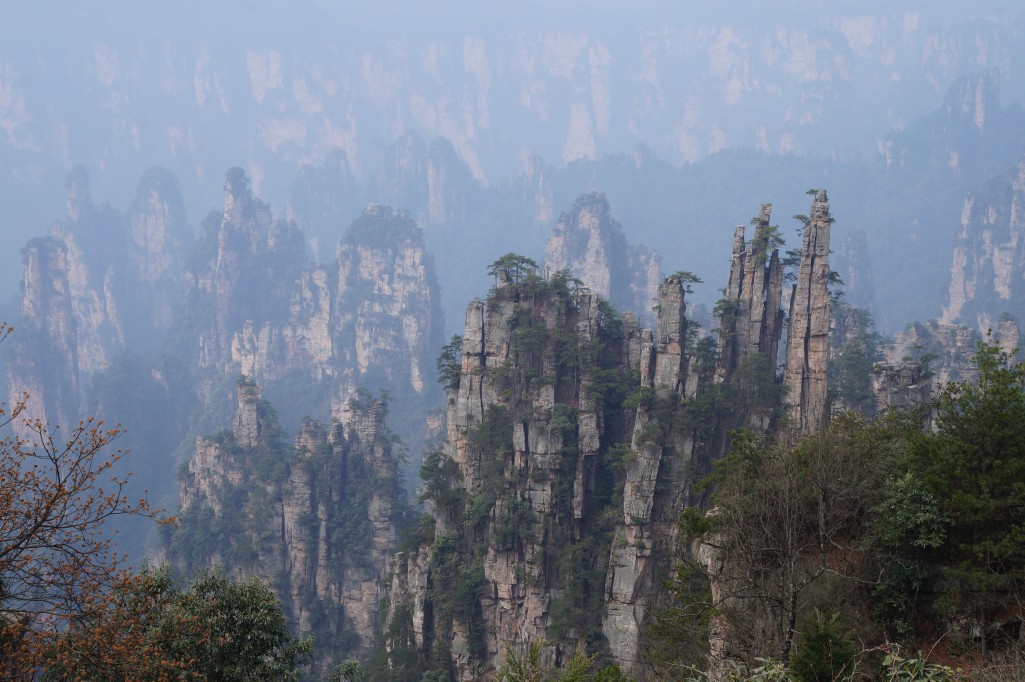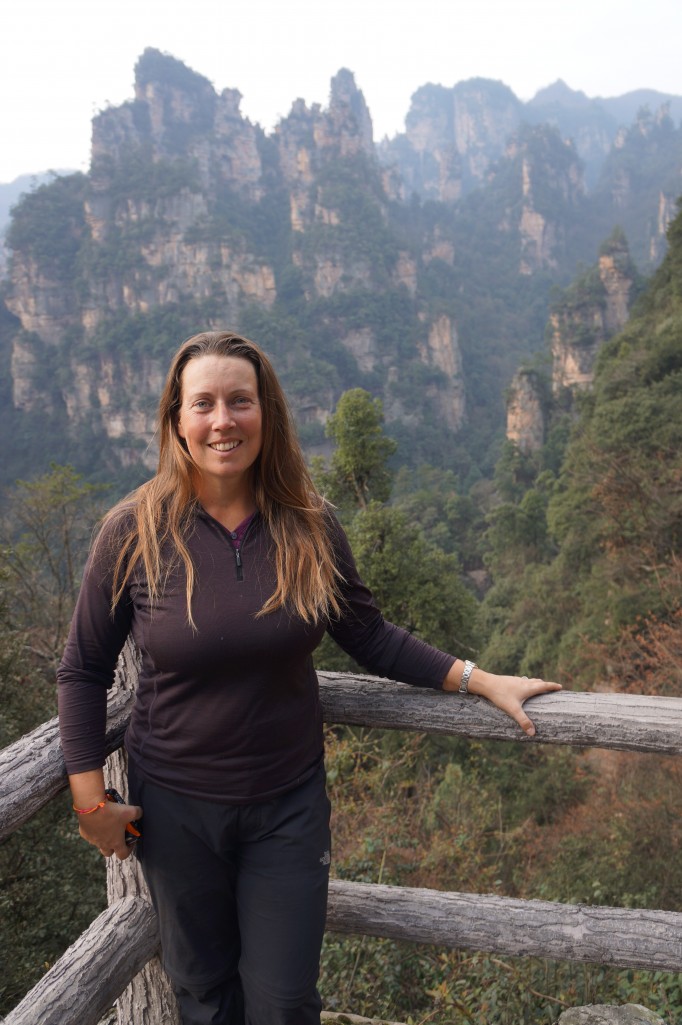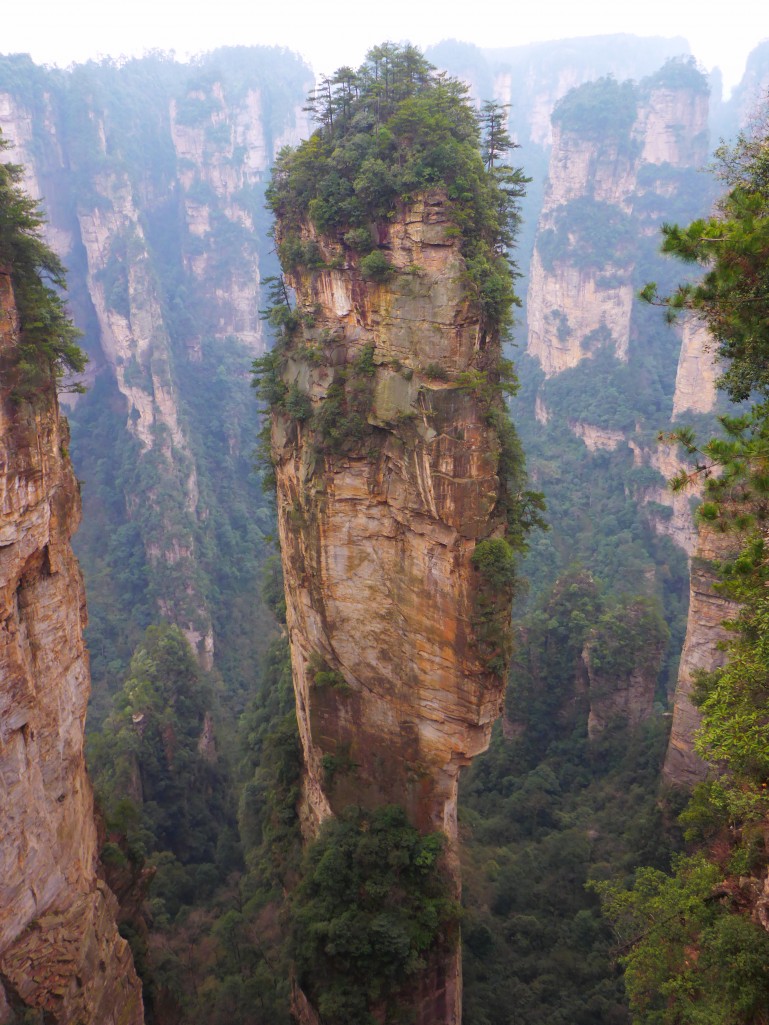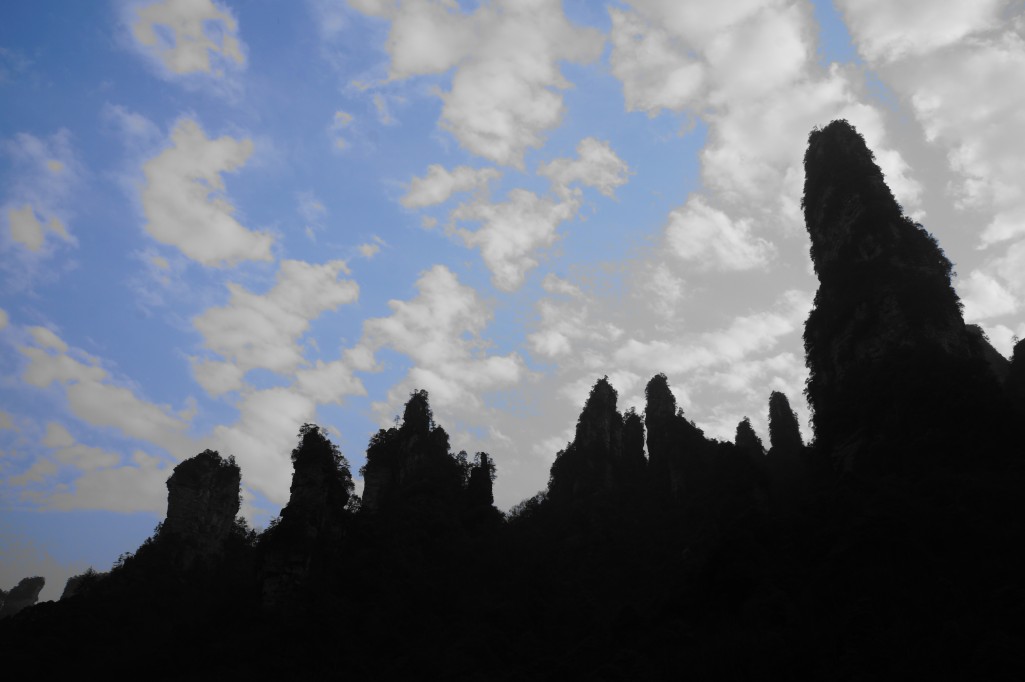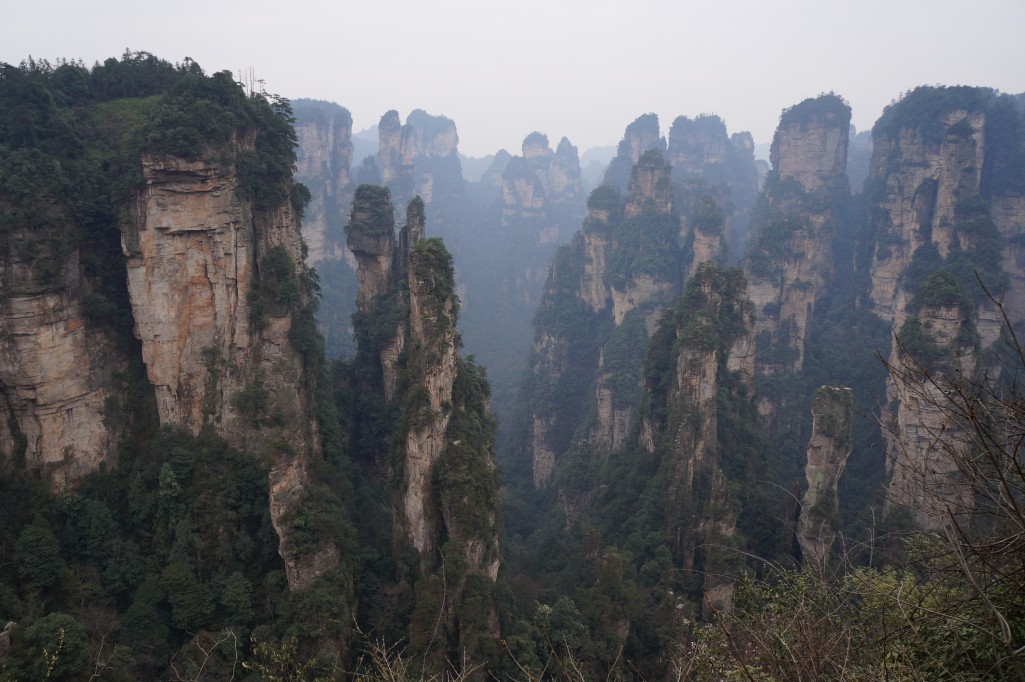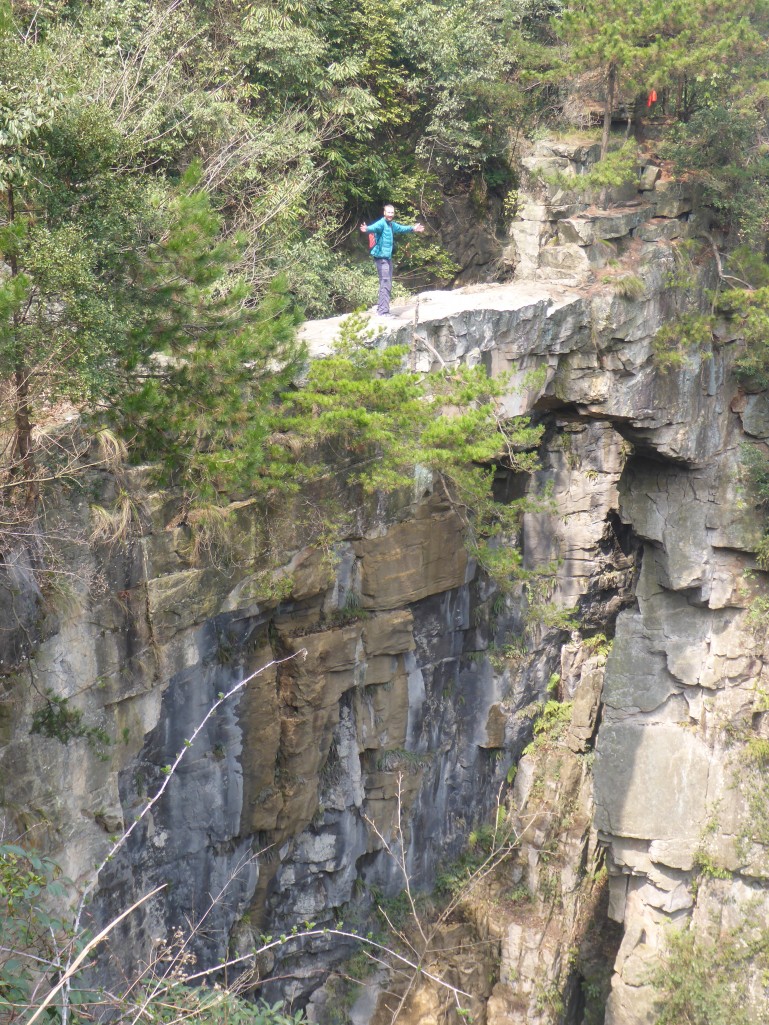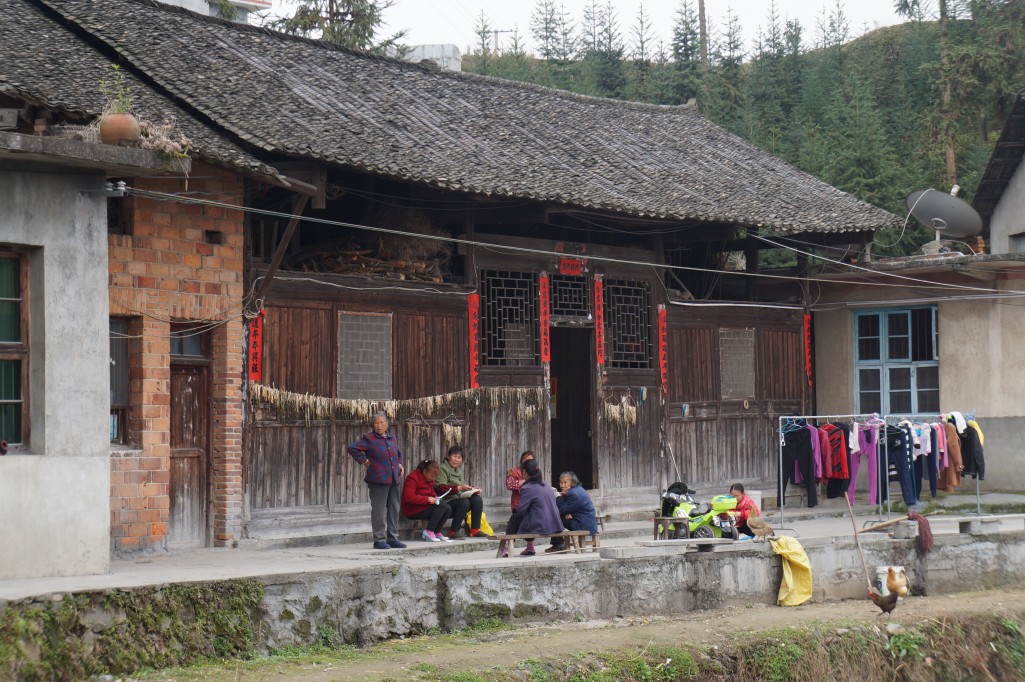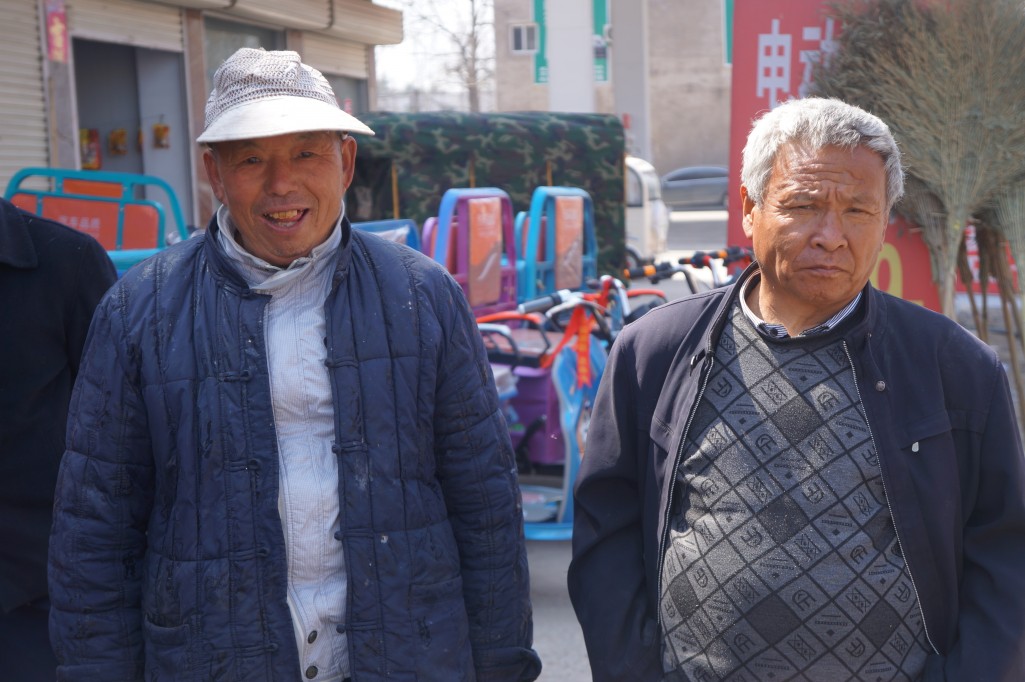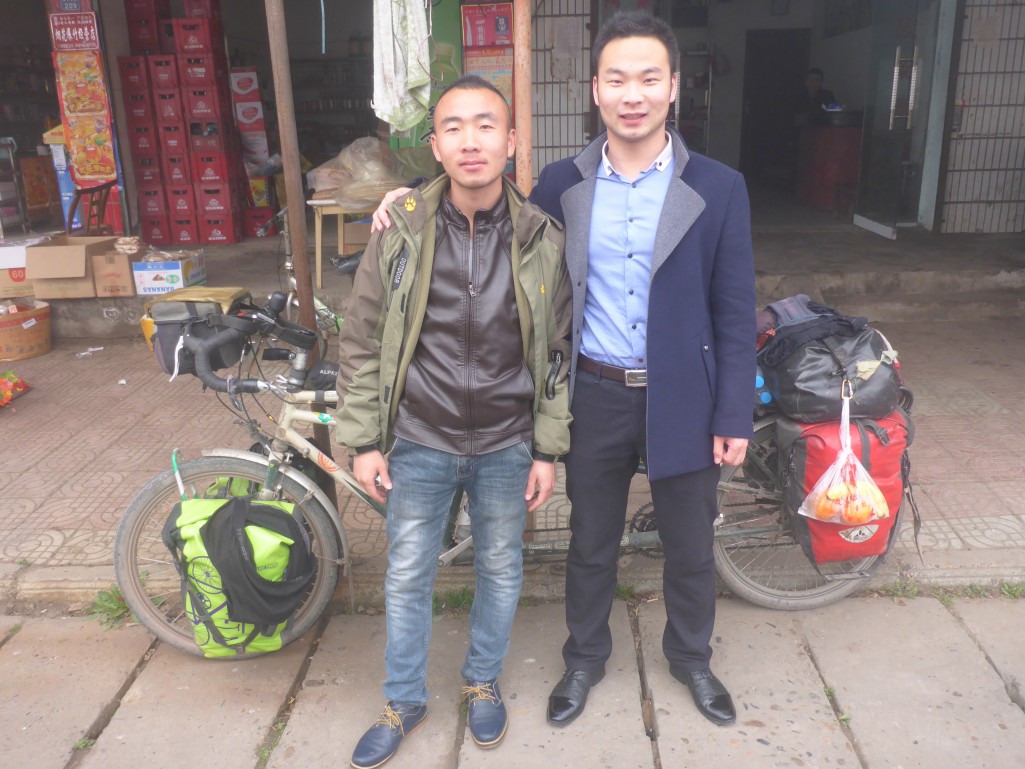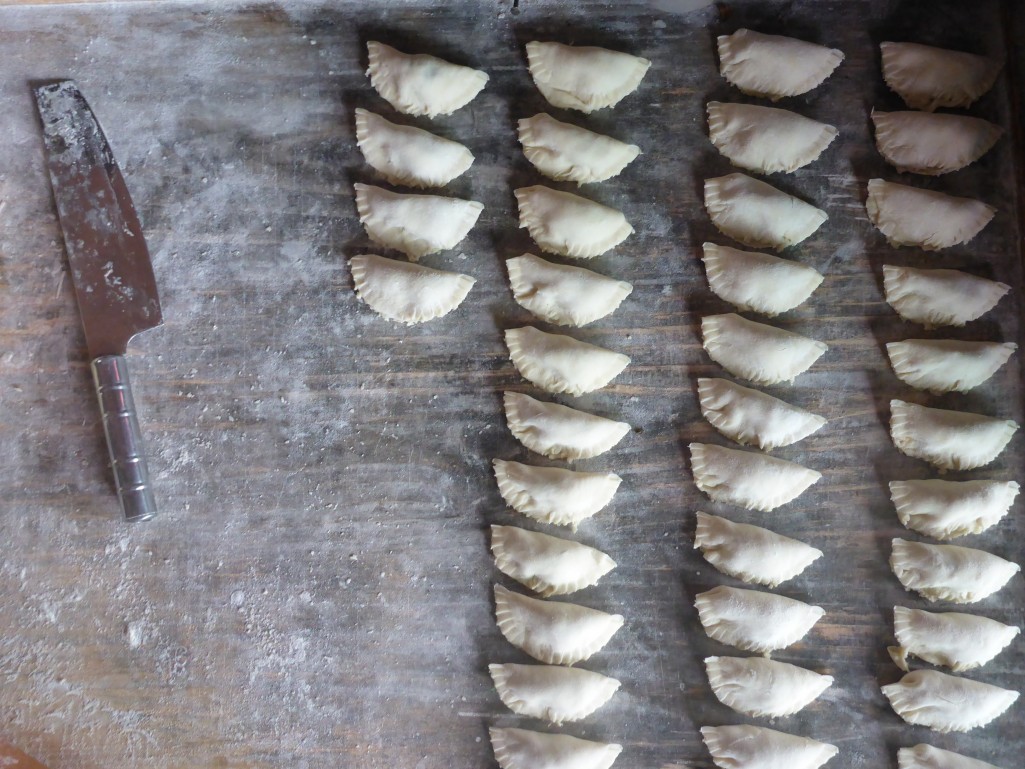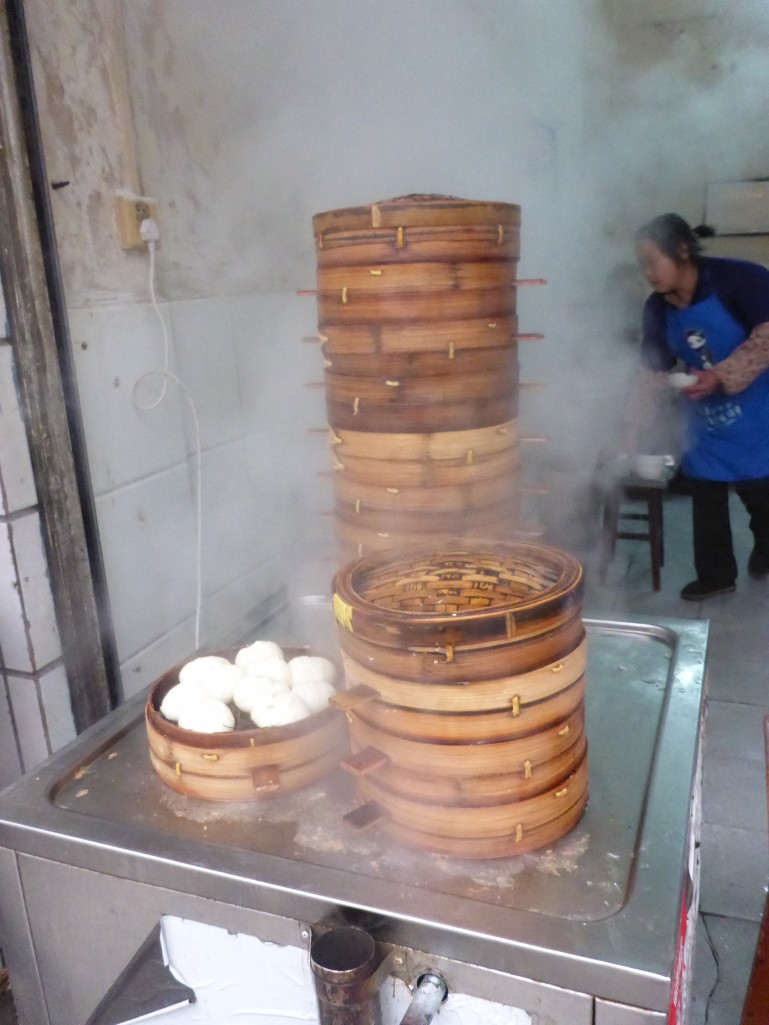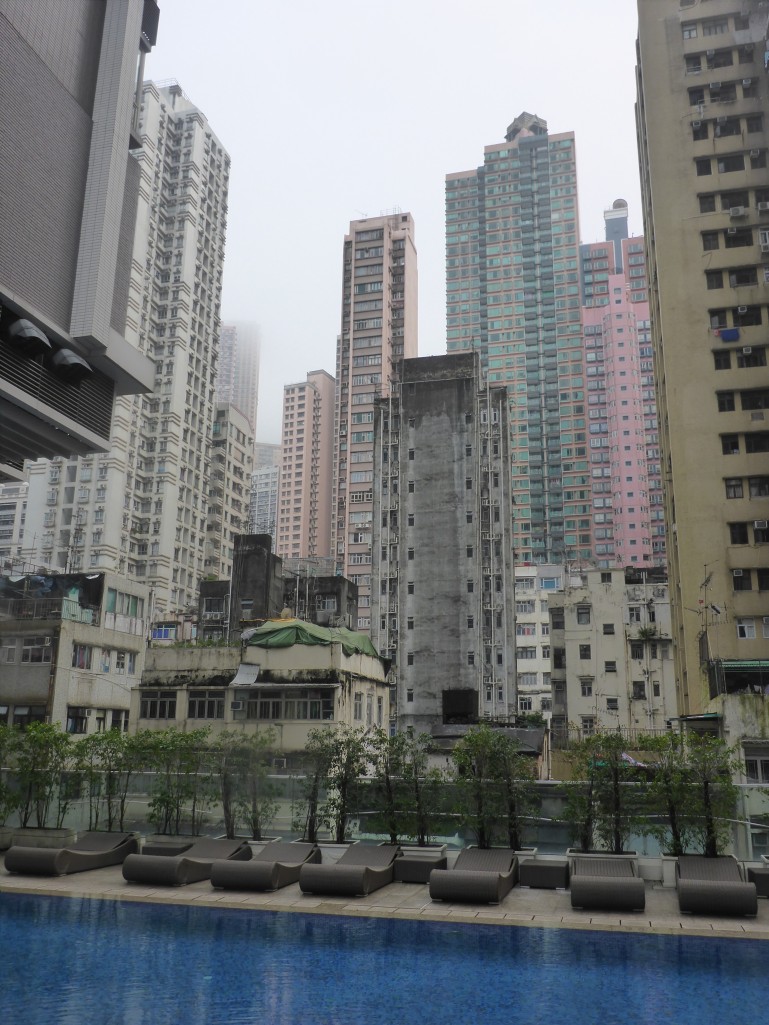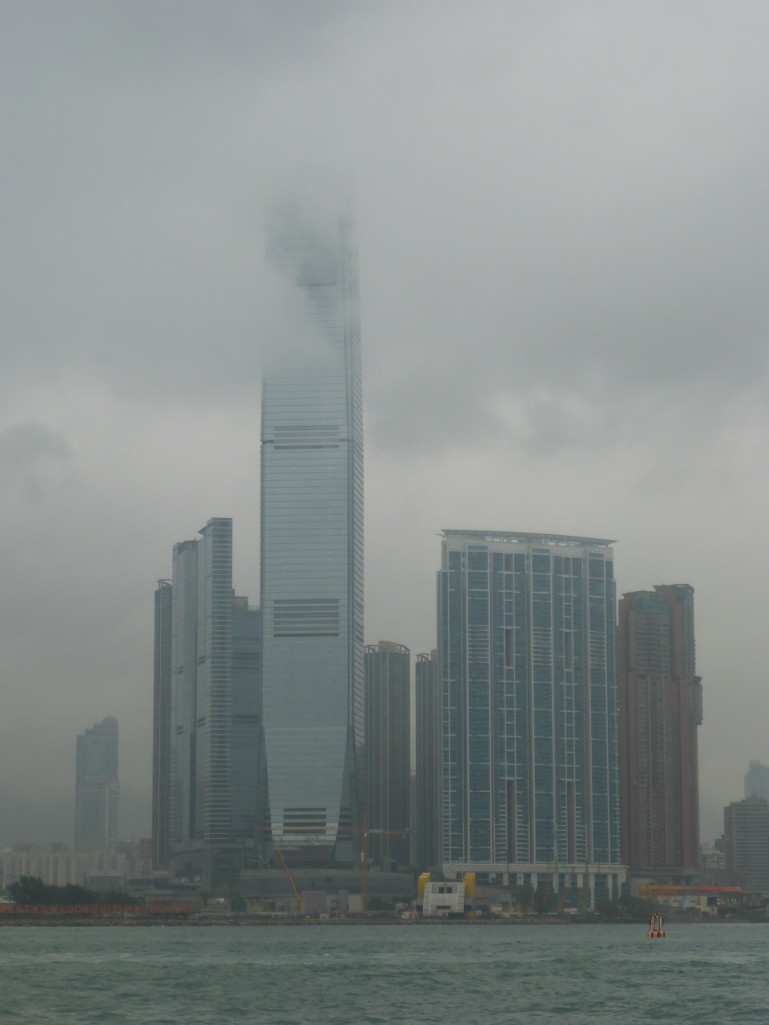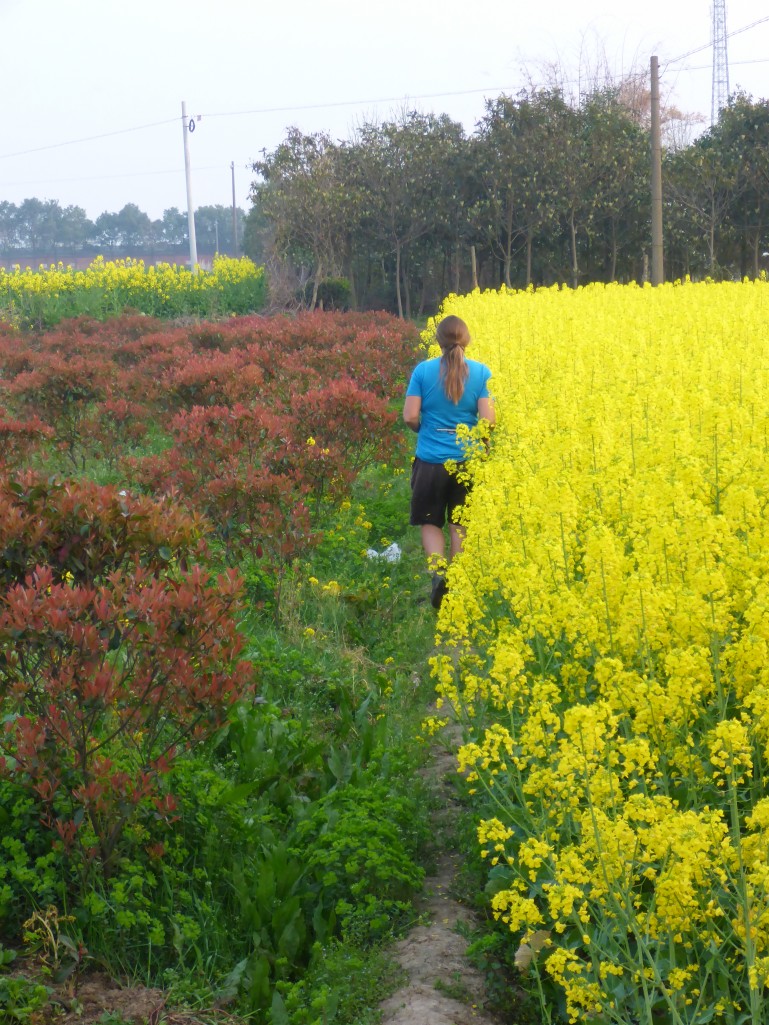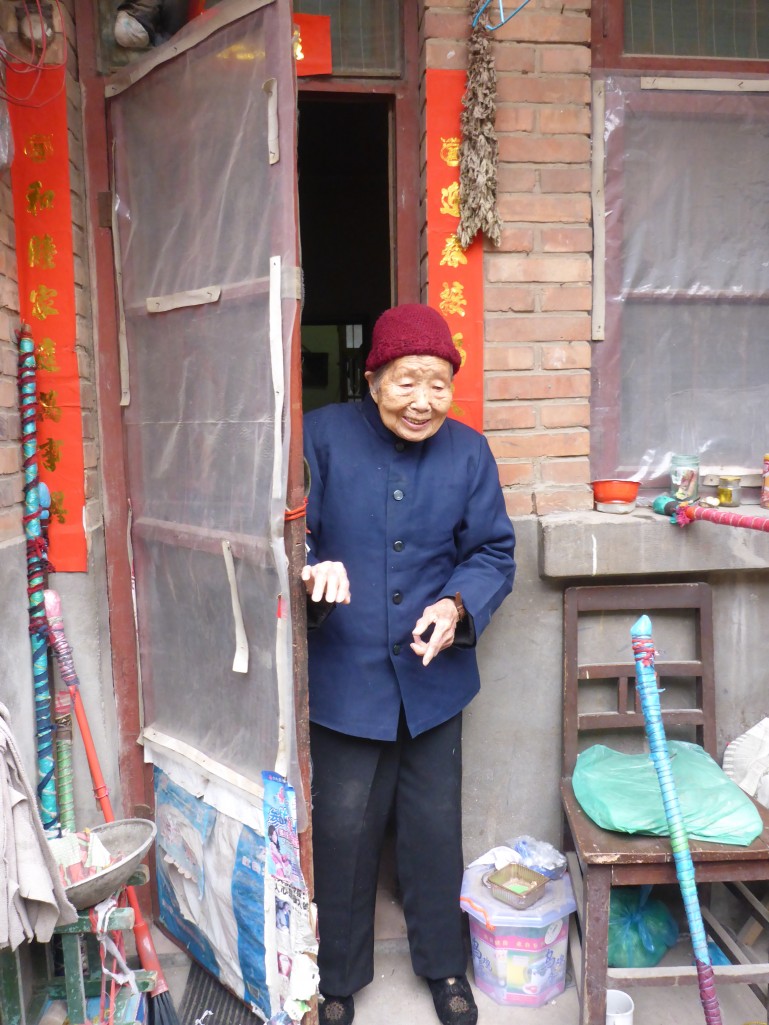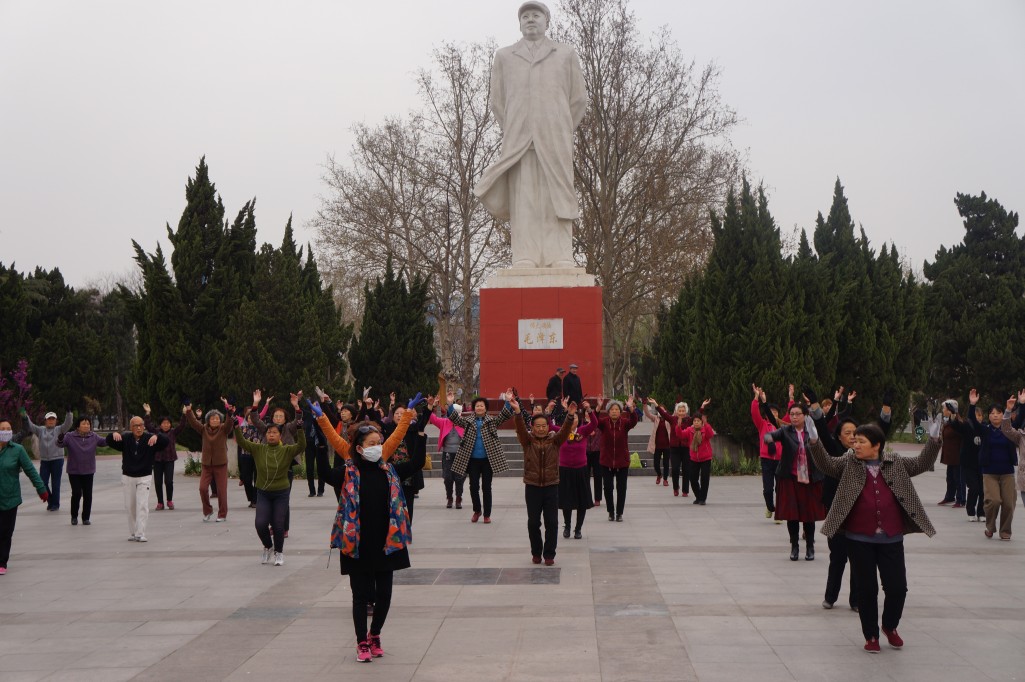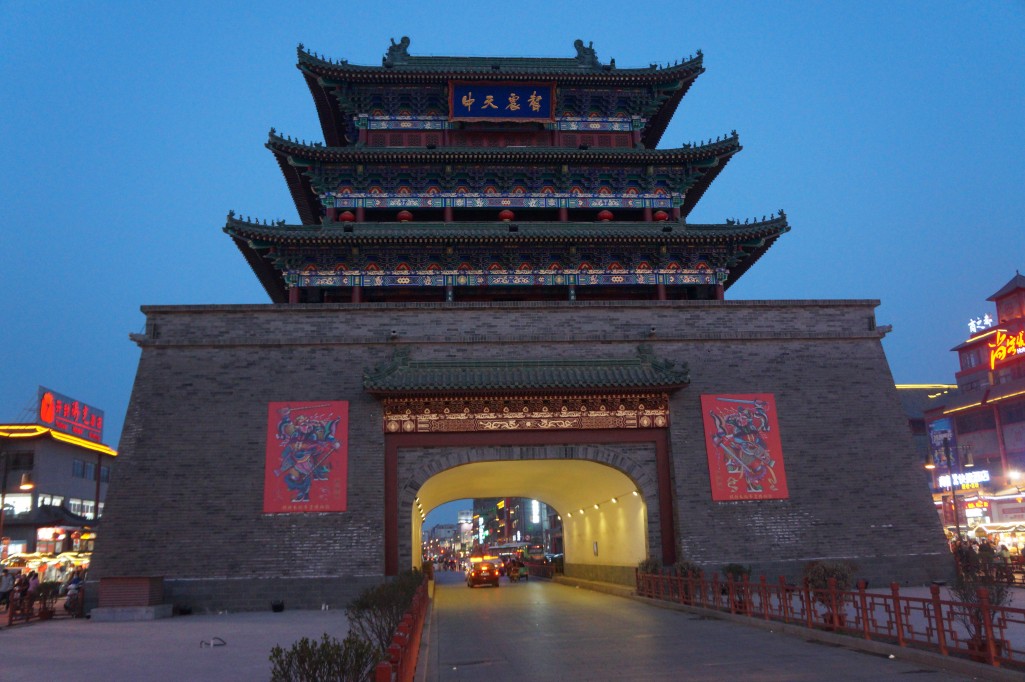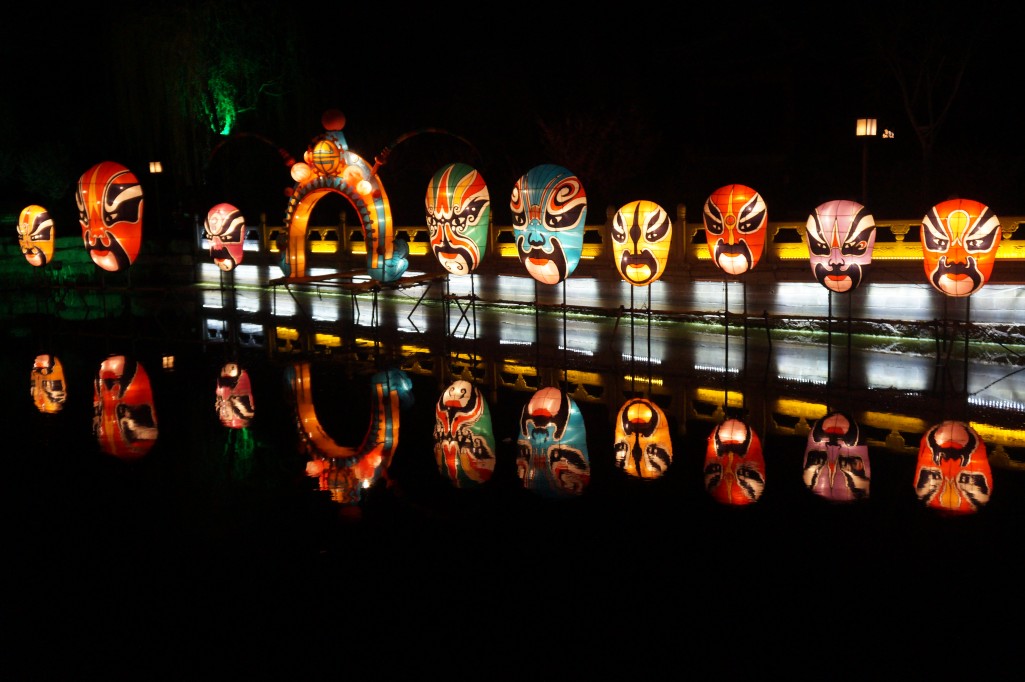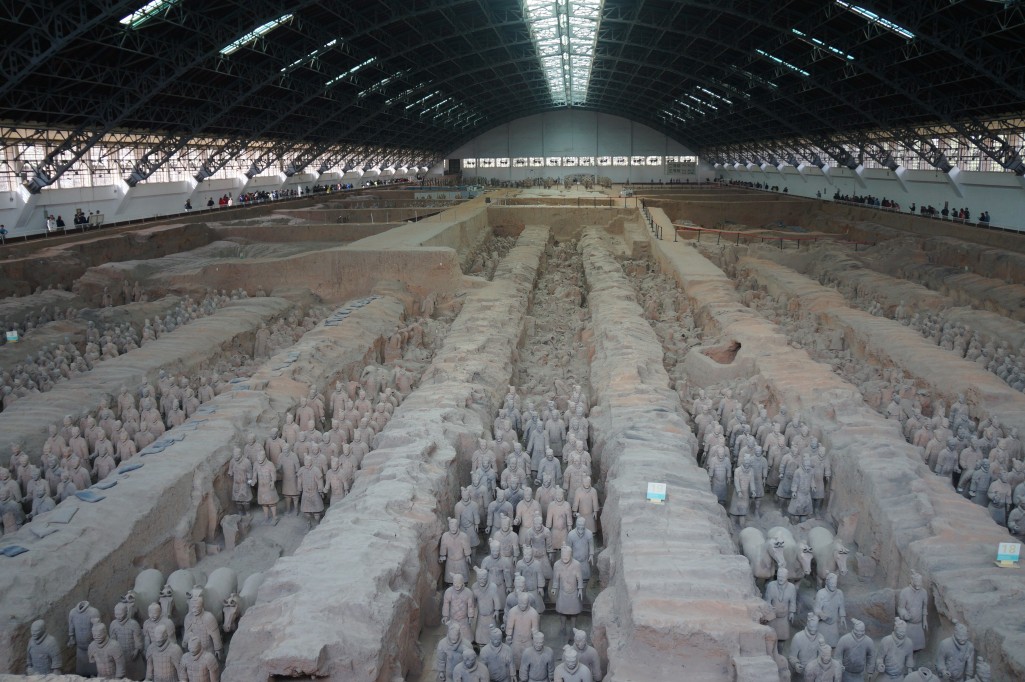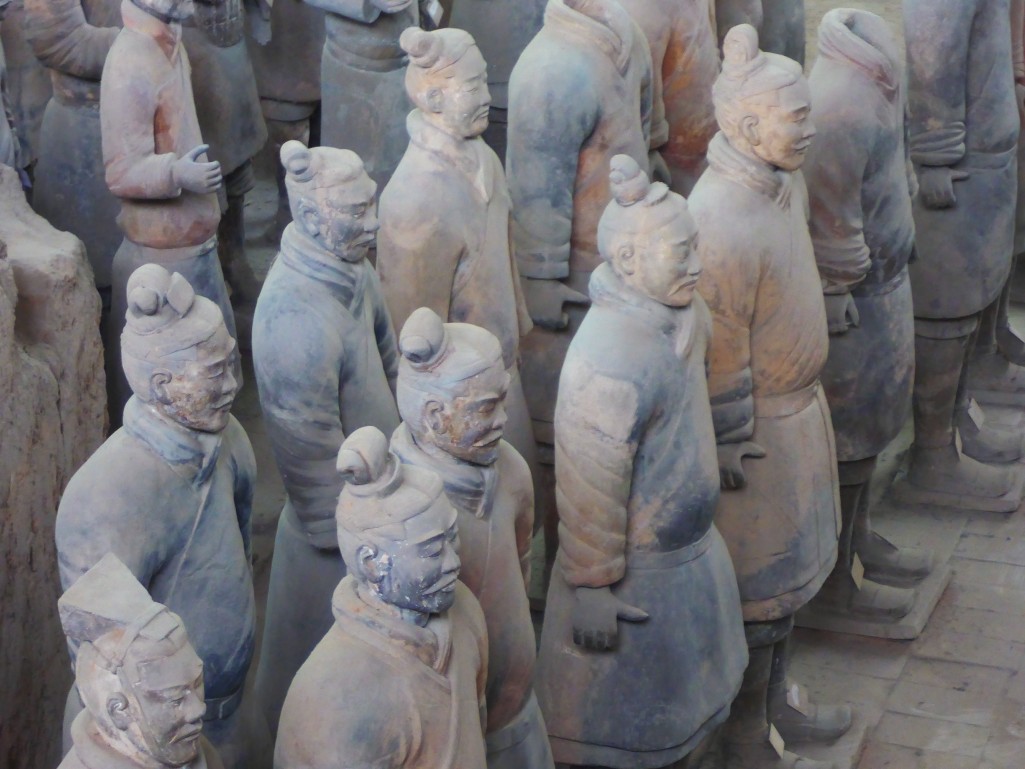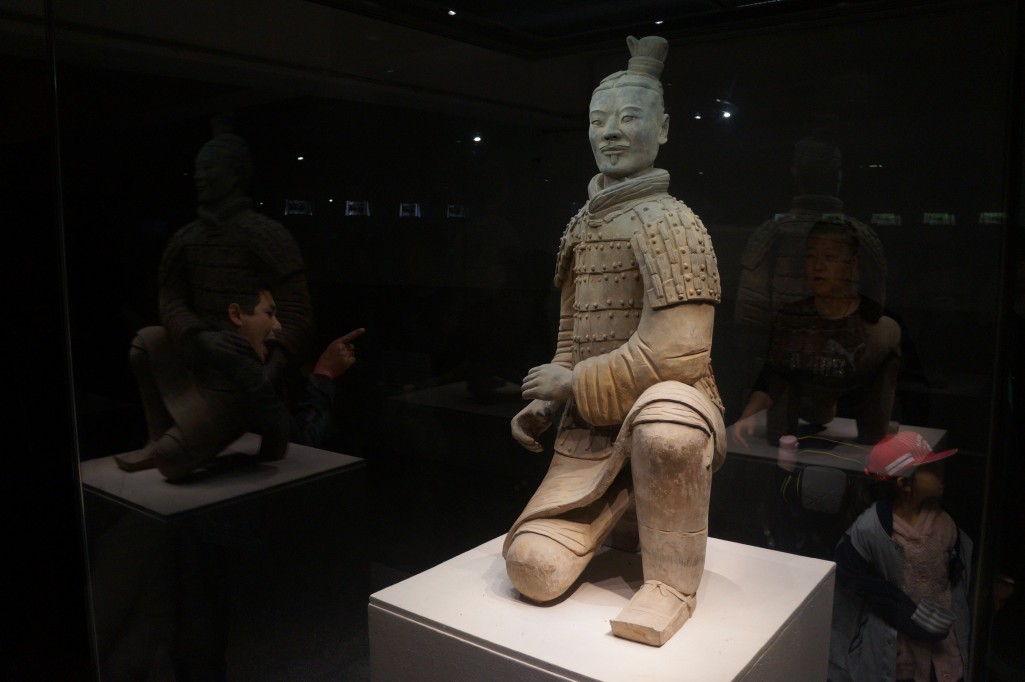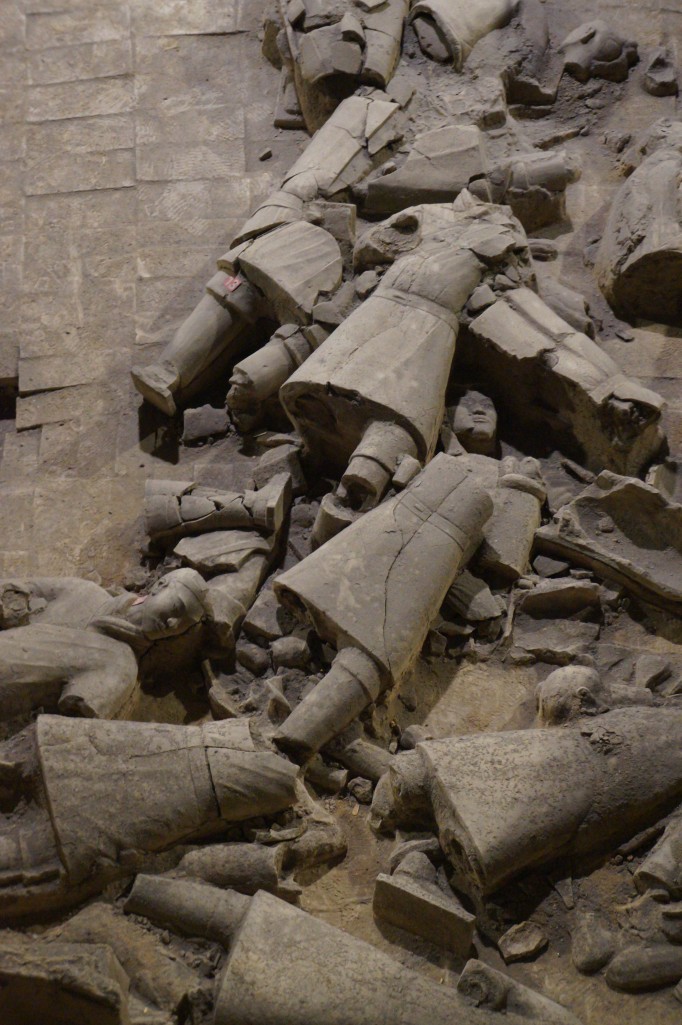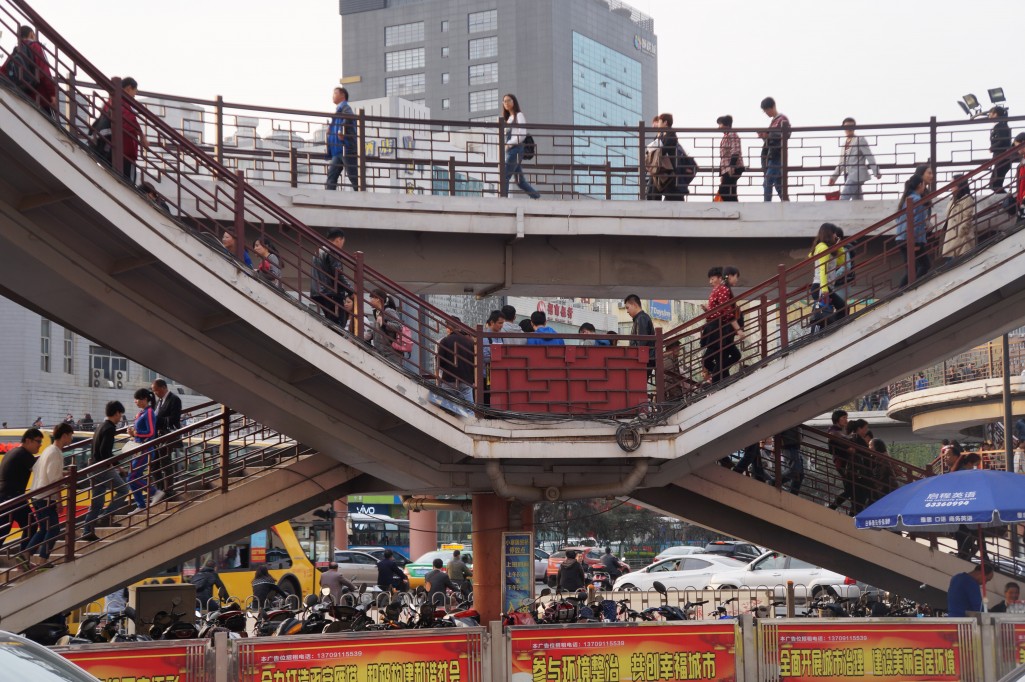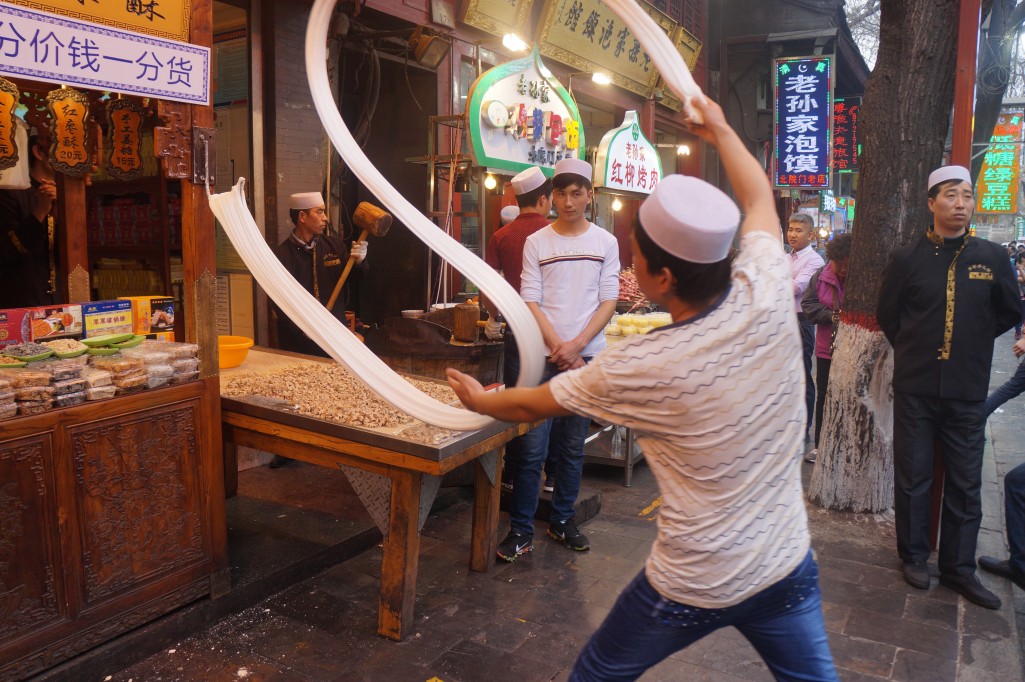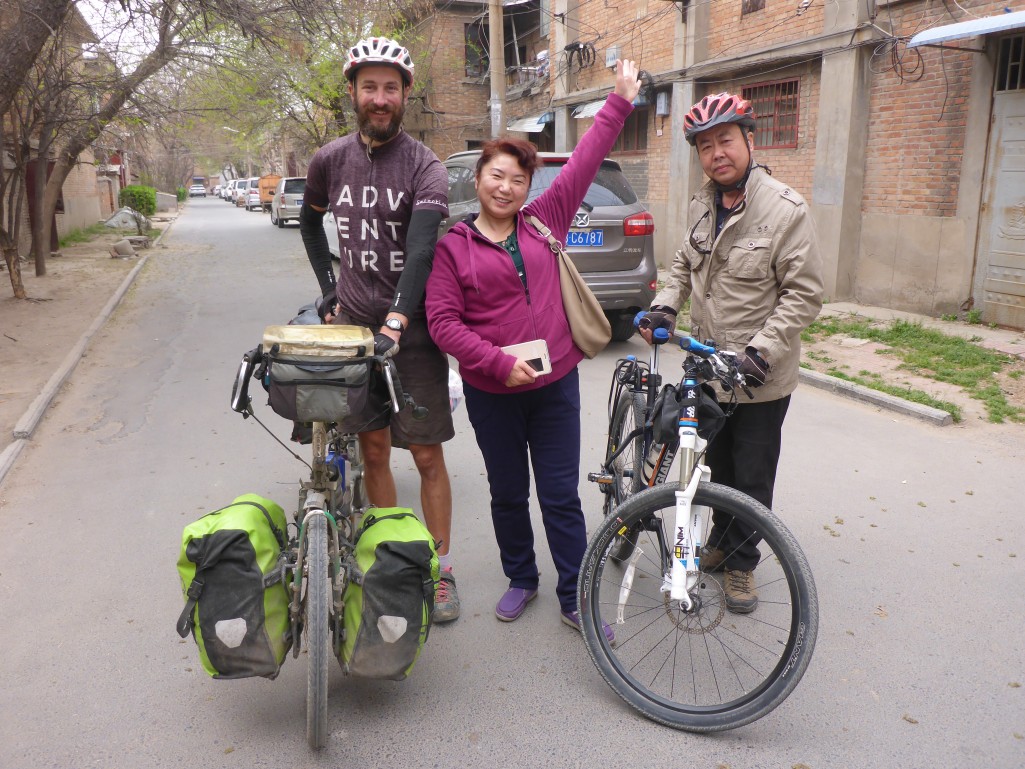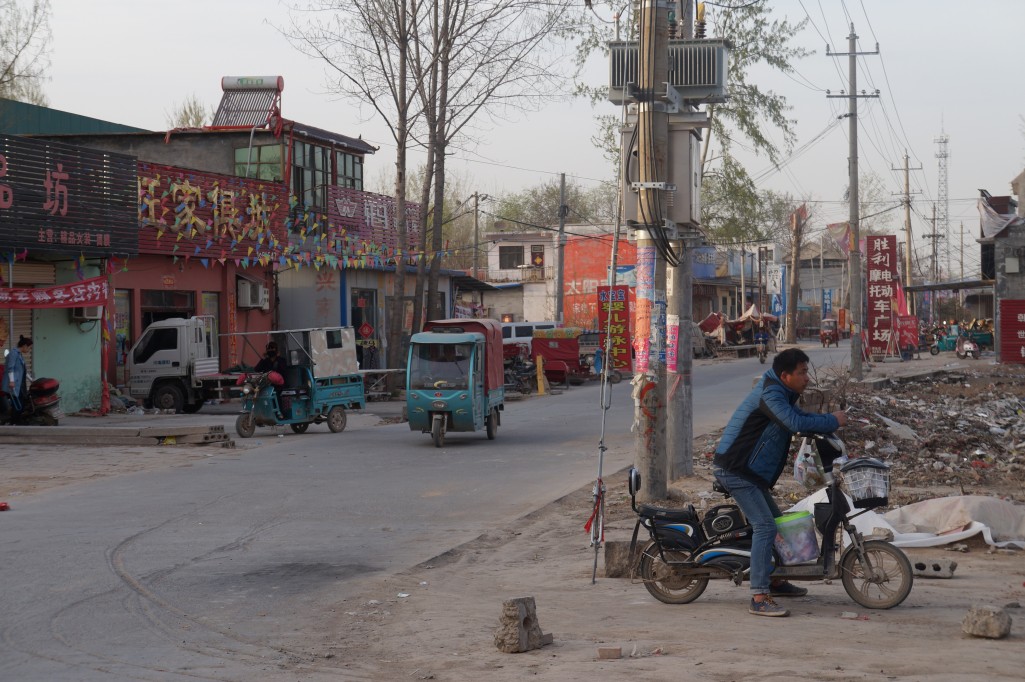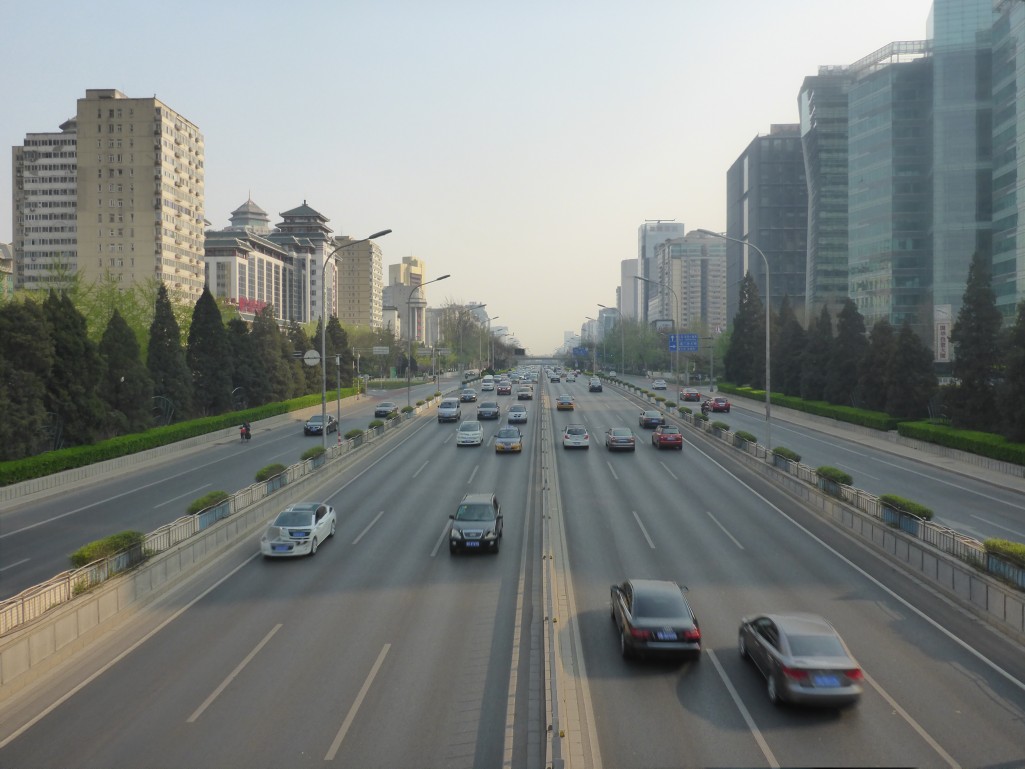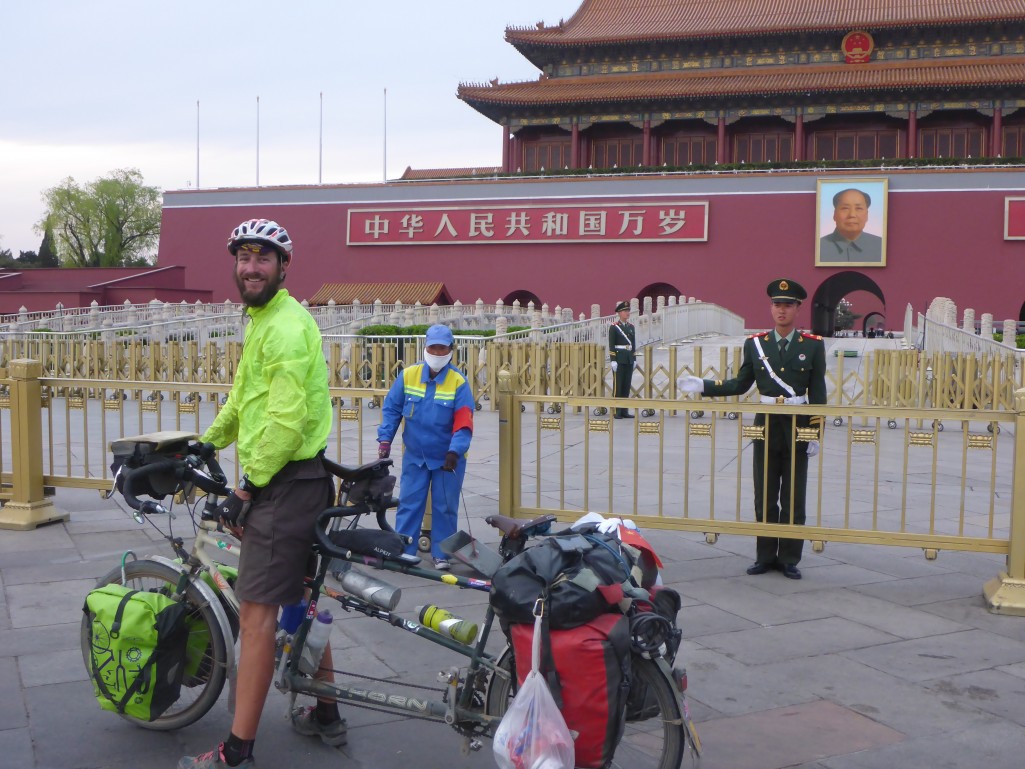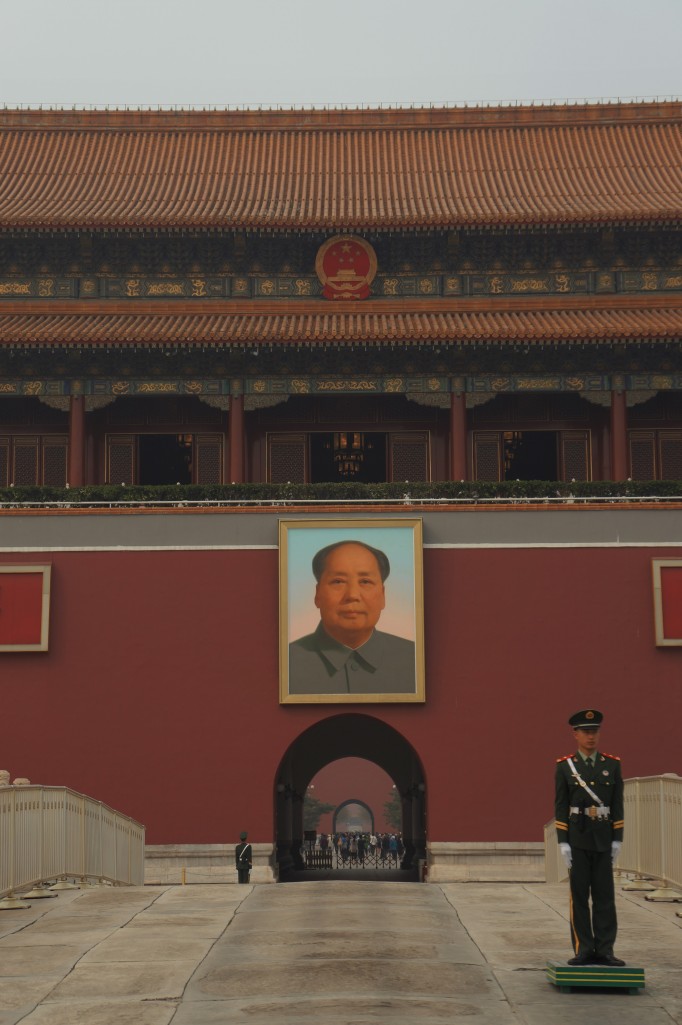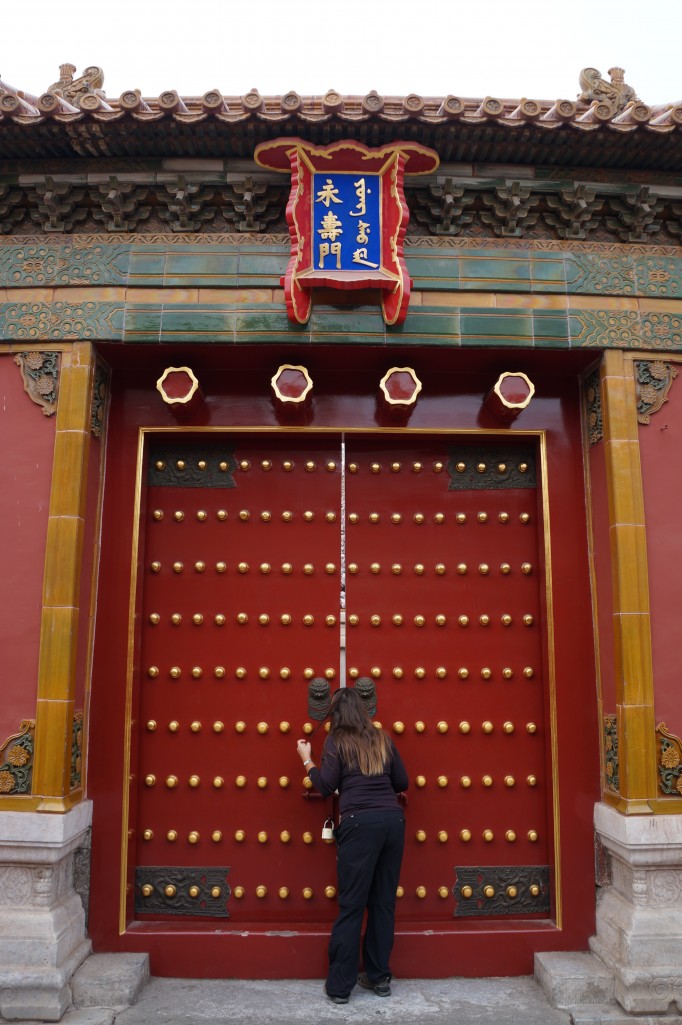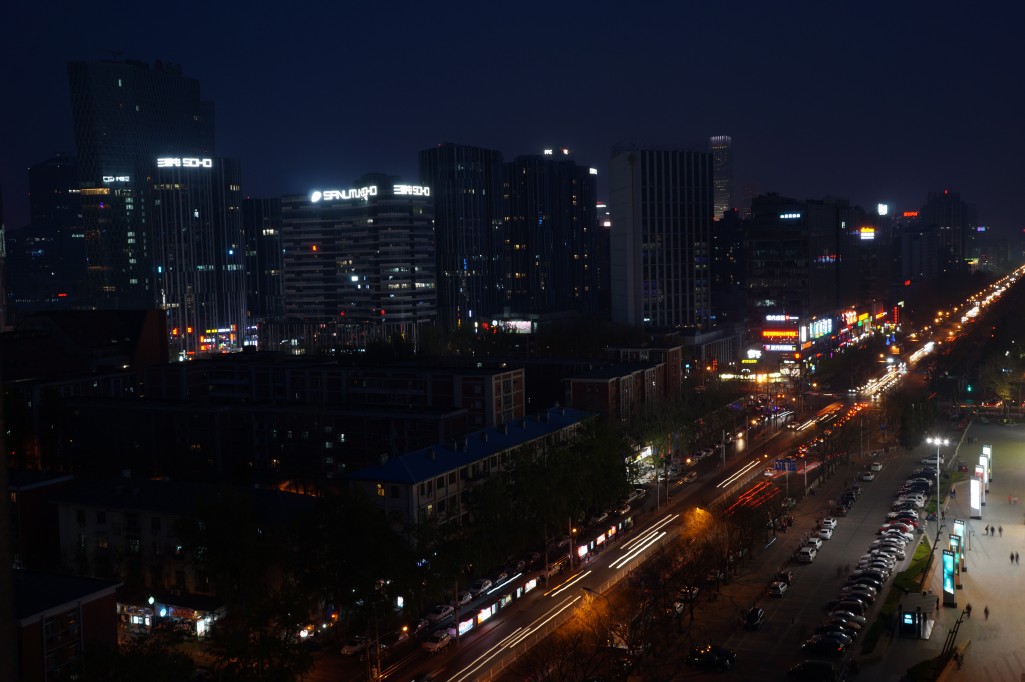Beijing to Seoul

Looking back it seems silly that we had any form of trepidation before crossing into China. It’s been a country that, more than any other so far, has exceeded expectations.
We’ve found unbelievable generosity that goes beyond even the high benchmark set in the Muslim countries. Areas of the landscape have been unlike anything else we’ve seen, truly extraordinary. Food (on the most part) has been tasty, plentiful and cheap, and there’s always hot water and pot noodles available for a quick fix. The urban sprawl of the great plain has been relatively easy to negotiate thanks to huge roads and separate bike lanes, and camping has been possible even if suitable sites need some searching out.
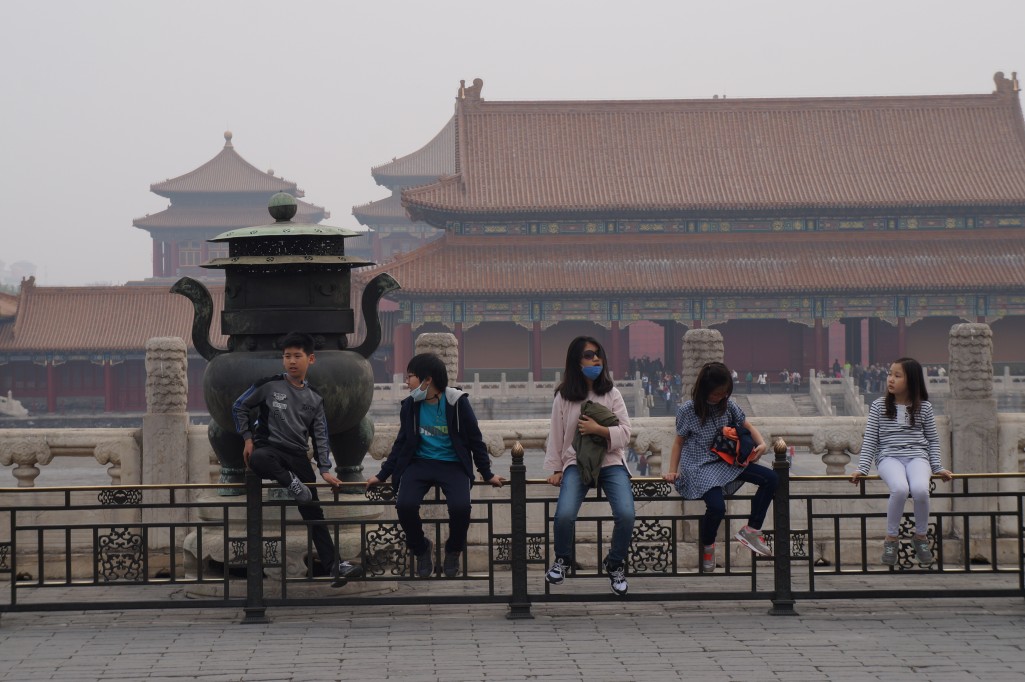
Things have changed a lot in the last 20 years but there is still a level of control in the country that will be more obvious to the people who live there than for us just passing through. We were certainly being watched and had our photographs taken several times each day by cameras on overhead road gantries, in parks and through towns. Certain internet sites were blocked but a decent VPN easily gets round that to allow the all important status updates to be posted. Our main difficulty came when we tried to get our visa extended and that experience highlighted the lack of flexibility with anyone in authority. They are not prepared to risk their jobs by bending the rules so you have to accept them and stick to them or pay the consequences.
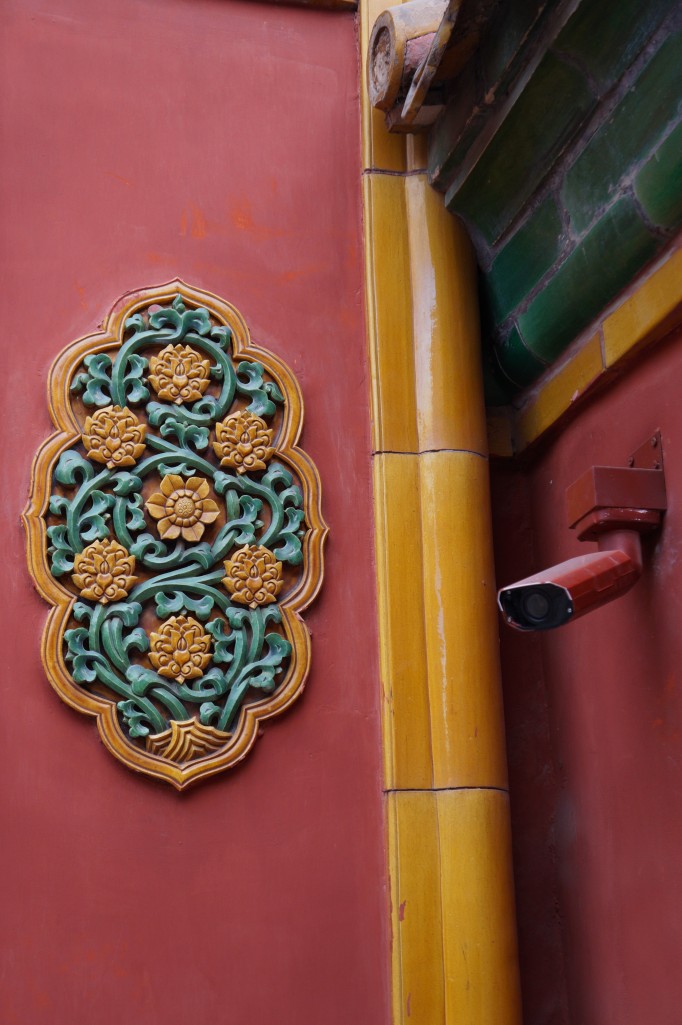
But all of this is wrapped up in a ‘world’s biggest’, neon lit, loud, rebuilt, crazy package that is uniquely China. Overall we’ve had a great time and the good news is that there’s more to explore another time. A lot, lot more.
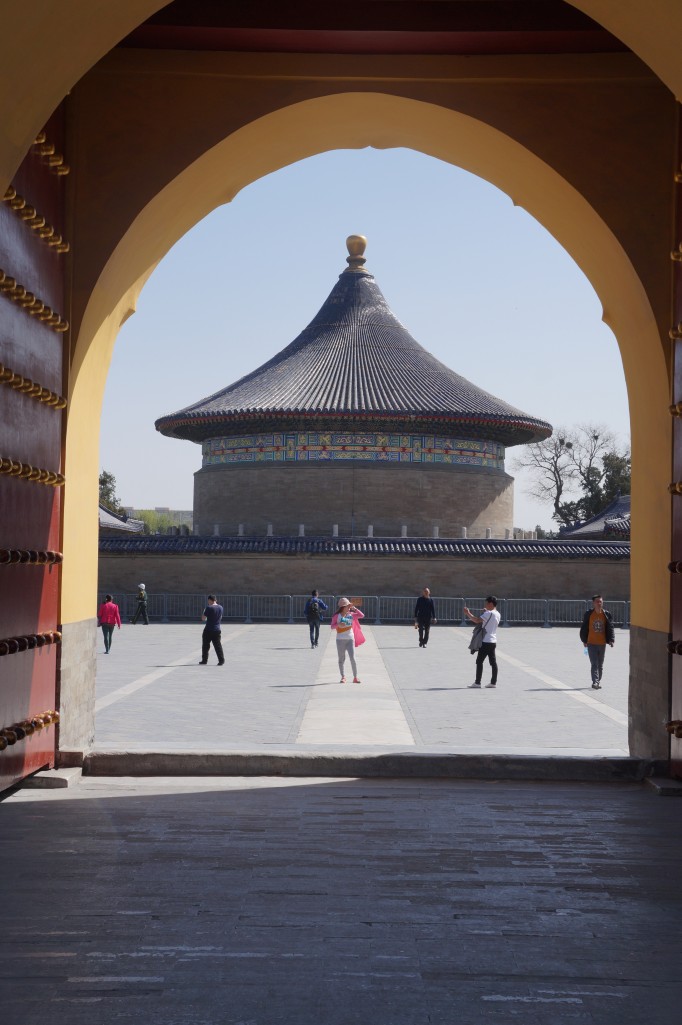
Back in Beijing we’re reunited with our bike which had been kindly looked after by Ray and Florence while we were in the DPRK. When we arrive back at their apartment we find they have some other Warmshowers guests staying in the form of a family from France (https://leschamavelo.wordpress.com). Here is a good example of how having several children doesn’t have to be a barrier to adventures. With Albane aged 6 riding on the front of a recumbent tandem, Joseph (9) and Ines (11) on solo bikes with their parents Geraldine and Antoine, the Chamussey family have ridden from their home in Montpellier to Istanbul and then from Bangkok to Beijing. Next they’re heading into Mongolia and back into Europe via Russia. It makes any logistical difficulties with getting 2 adults on a tandem across the world seem tiny in comparison but they seem amazingly relaxed and organised. Schooling is provided as and when they find time but the education they will be getting from their life on the road must be invaluable. Chapeau et bon voyage!

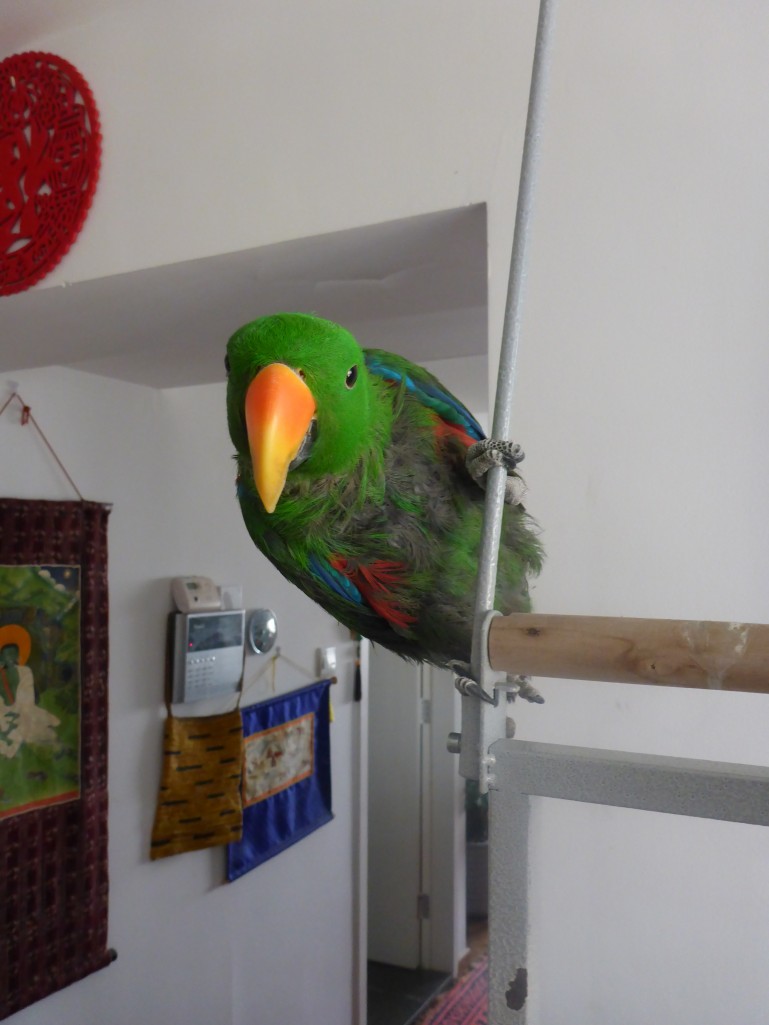
Before setting off again we take a trip up to the Great Wall as it wouldn’t be right to leave China without seeing it. We’re joined by Karen, Tineke and Manuel who we’d met in the DPRK, as well as some backpackers from their hostel and together we take various buses and a taxi to find a section of the wall that is unrestored and empty. For our Colombian friend Manuel this is a seminal moment as it marks the completion of several years of travelling on a mission to visit all 7 modern wonders of the world. “This feels good, really, really good!” he shouts from the ramparts.
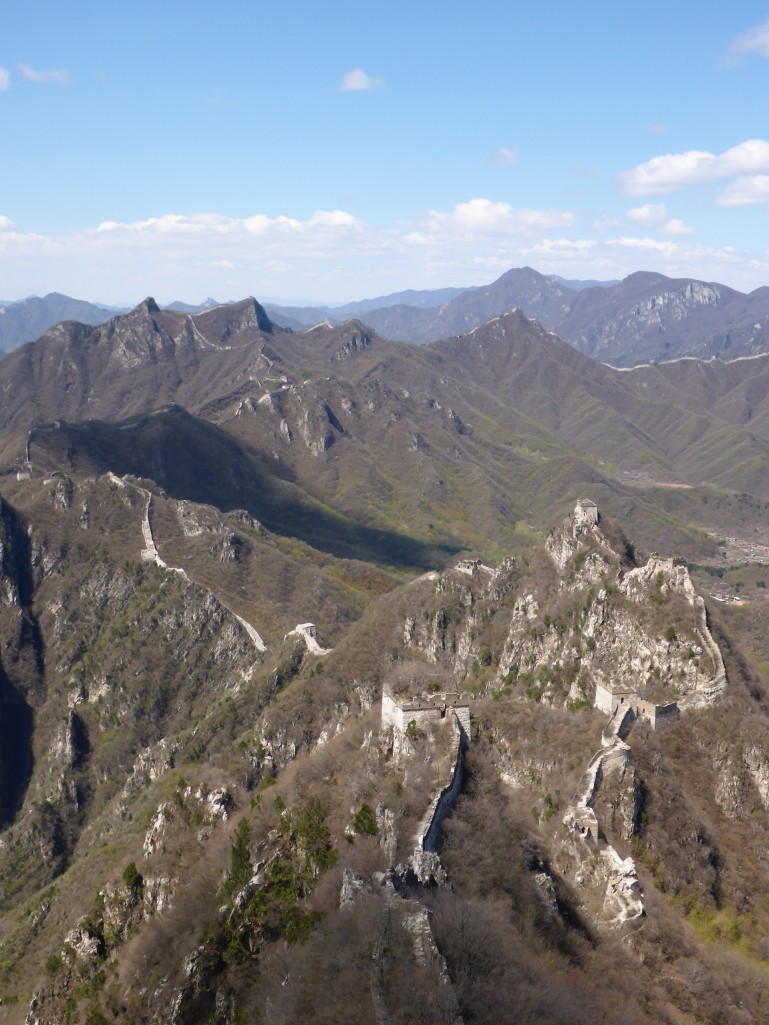

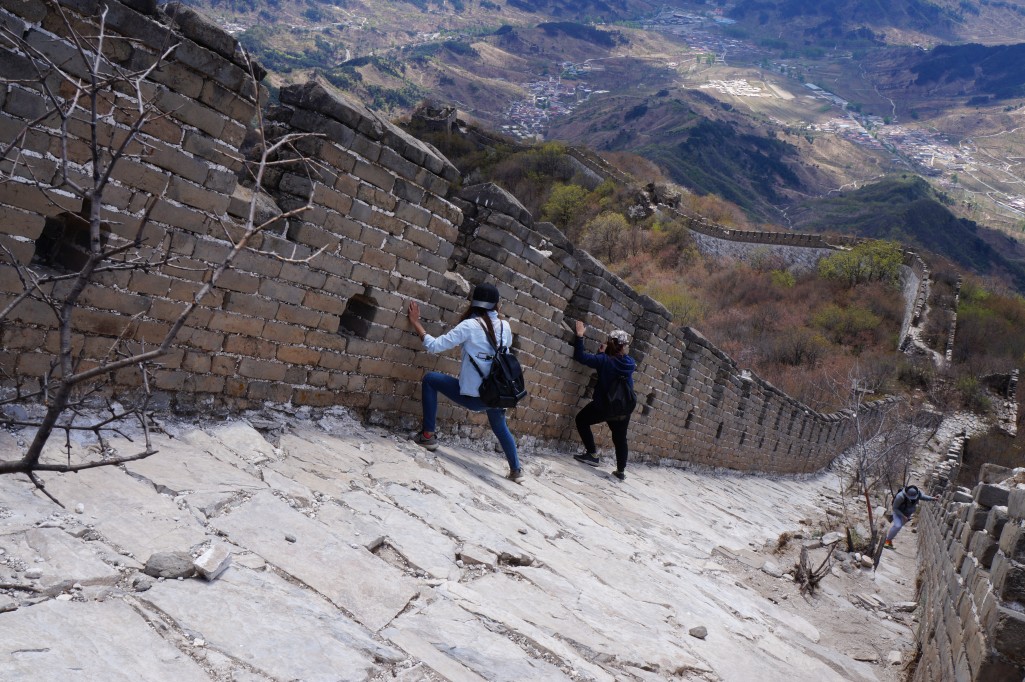

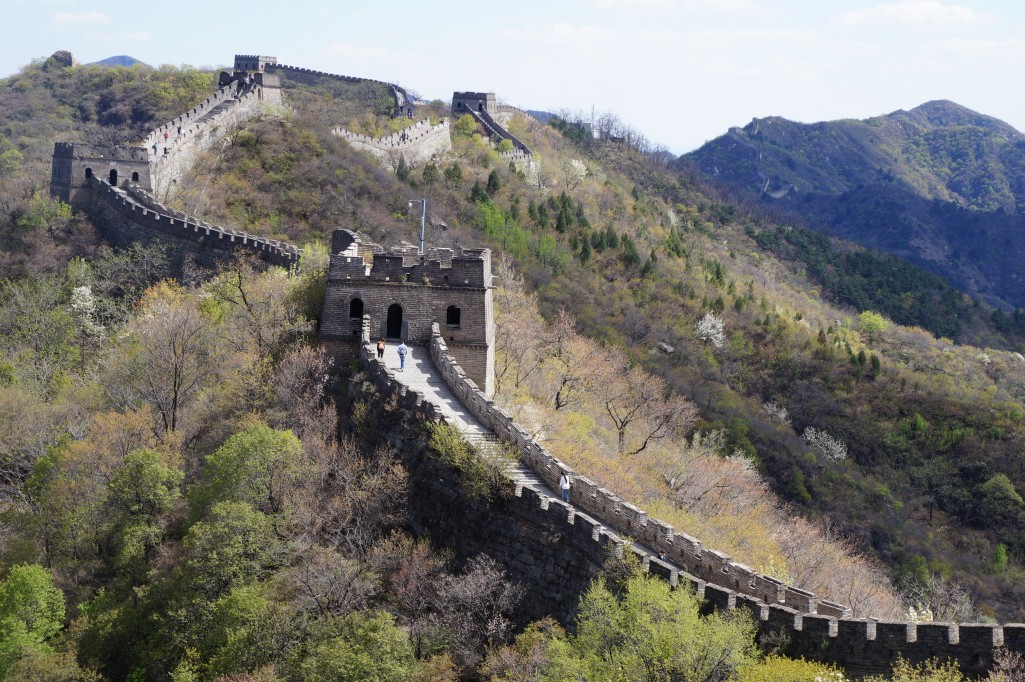

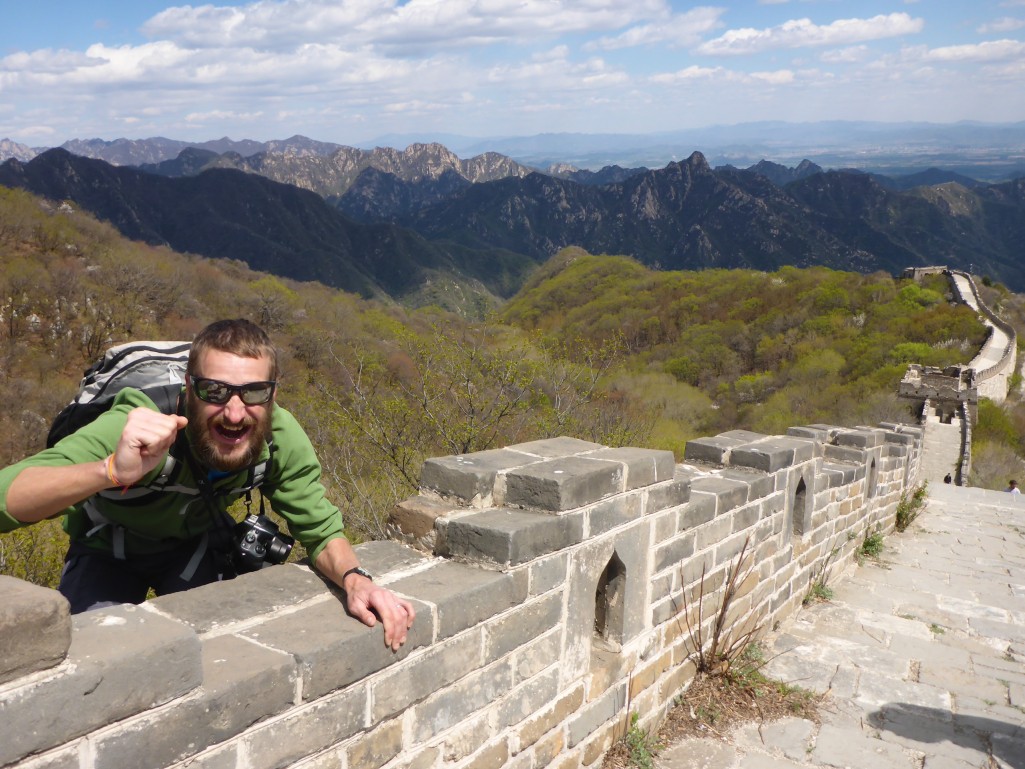
The next day we’re back on the bike, waking up the cycling muscles and working off the excesses of our 2 week break. It takes 2 days to make our way down past Tianjin and into the port of Tanggu. This is one of the largest ports in the world and somehow we need to find the ferry terminal to buy tickets to Incheon. It’s not where we thought it should be but we do find Mike in a nearby office and he makes a few calls and gives us directions to where we actually need to go. The Jinchon ferry company is well hidden on the fourth floor inside the hotel back in town and after buying our tickets they give us a good discount on a room for the night.


Tanggu is not a bike friendly place. In the morning we ignore the signs on the tunnels and flyovers that say no bicycles as otherwise we’d never have got to the ferry on time. No one seems to mind though as traffic rules are only loosely observed.
The ferry terminal is much like an airport so all the bags have to come off to be scanned, we then hang on tight to the bike on an escalator to get up to the boarding area. On the boat we get a cabin with a thin futon bed on the floor which serves us just fine. Even better is the fact that all meals are included though the scrum that ensues when the announcement that dinner is served is a sight to behold. We’re the only westerners on board as most people opt for the 1 hour flight from Beijing to Seoul instead of this 25 hour ferry journey but it’s a much more pleasant way to travel, especially with the bike.

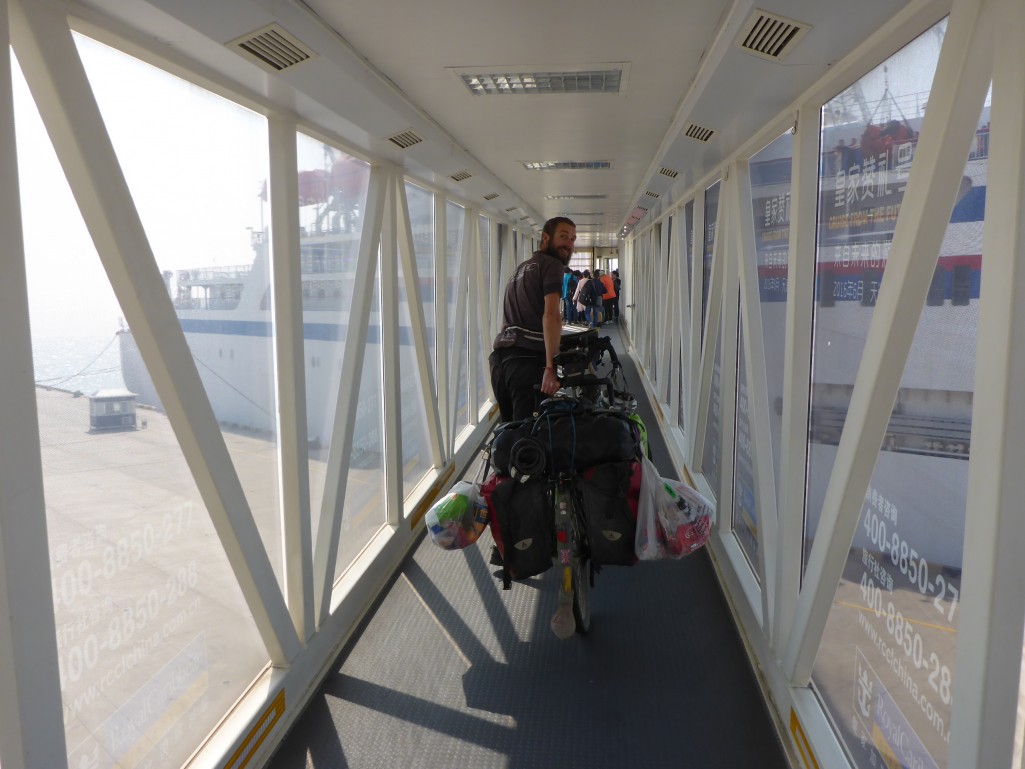


After passing through an enormous lock that takes an hour to fill we arrive in the port of Incheon. Unfortunately their terminal isn’t as grand as the one in Tanggu so instead of an easy gangplank we have to lug the bike down several flights of stairs. The customs officer turns up his nose at the state of the bike and sprays it thoroughly with disinfectant but then we’re released to explore country number 41: South Korea.

It’s immediately obvious that this is a different country to China in that there are no scooters on the roads and we barely hear anyone beeping their horns on our way into Seoul. Our host in the capital city is Elbert who meets us in a lighting shop where we’ve been enjoying a coffee with the owners. They’d seen us loitering on the street and invited us in for a drink before calling Elbert to let him know his guests had arrived. It looks like there will be some similarities with China after all if Korean hospitality continues like this.
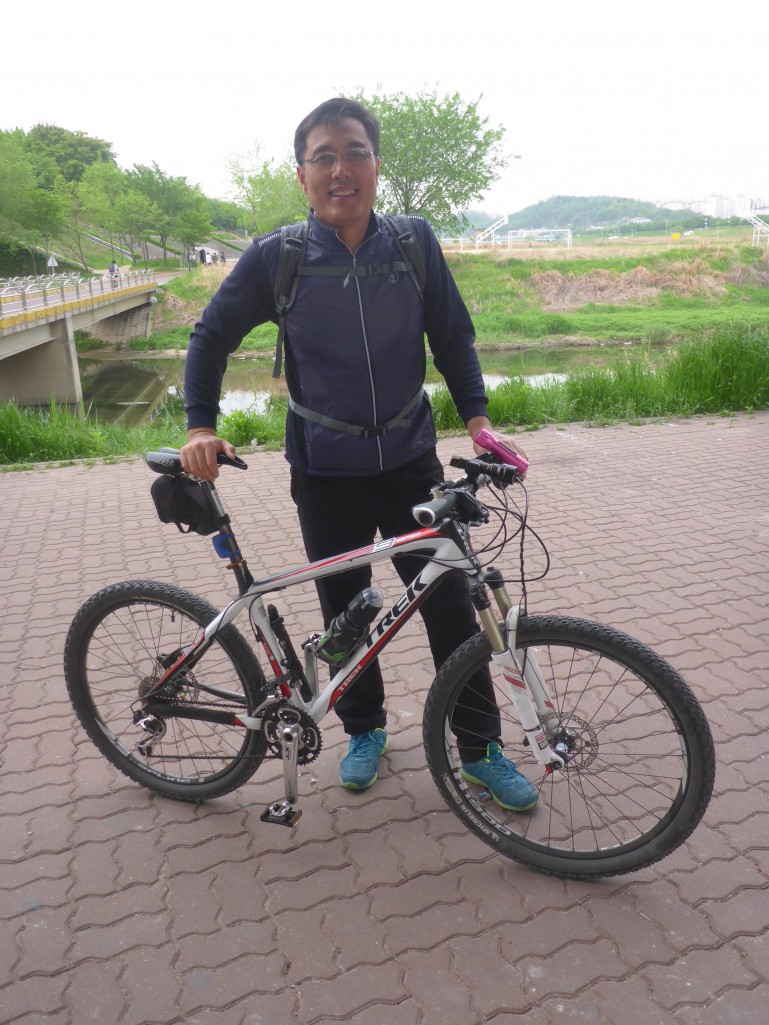
We are Elbert’s first ever Warmshowers guests and he’s keen to make us feel welcome so after dumping our kit in his smart flat we’re taken out for a Korean BBQ. We’ve seen this style of restaurant in most big cities in other countries but have been waiting for our first experience of one until we could get to the real McCoy. It’s worth the wait with a whole heap of tasty meat to cook on the hot plate in the middle of the table. Endless bowls of kimchi (spicy fermented cabbage) arrive along with cheese topped rice and soup all washed down with the local tipple, sogu. Elbert explains that there is a spiciness scale for Korean food with level 1 being plain and simple while level 10 could require a trip to the hospital. He suggests we’d be wise not to go beyond 5 given what we’re eating is definitely a lip tingler though not a tear jerker at a safe and sound level 3.
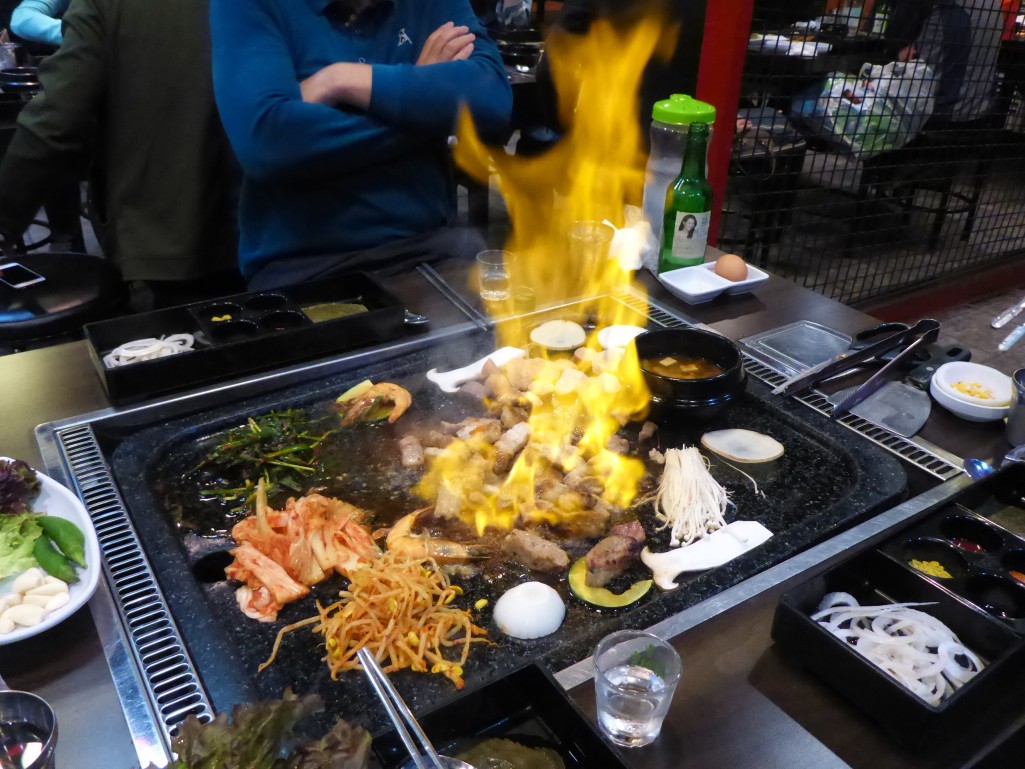
We have a rendezvous the next day with a certain Canadian we’d last seen on a mountain in India. Since we left her last September, Tara has ridden the Pamir Highway, jetted off to Greece, popped home to Canada then returned to Asia with exploits in Myanmar, Thailand and Taiwan. We’d suggested she joined us for a jaunt though Korea and the timing was right so she said yes!
First we have to find her though and we discover that our suggested meeting place of the entrance to the Olympic Metro station is flawed in that there are 10 different entrances. Eventually we spot a blonde girl jumping up and down on the opposite side of the street waving madly which is either someone doing their morning exercises or it must be Tara. It’s great to see her again and we spend the rest of the day catching up while strolling round some of the city’s attractions.
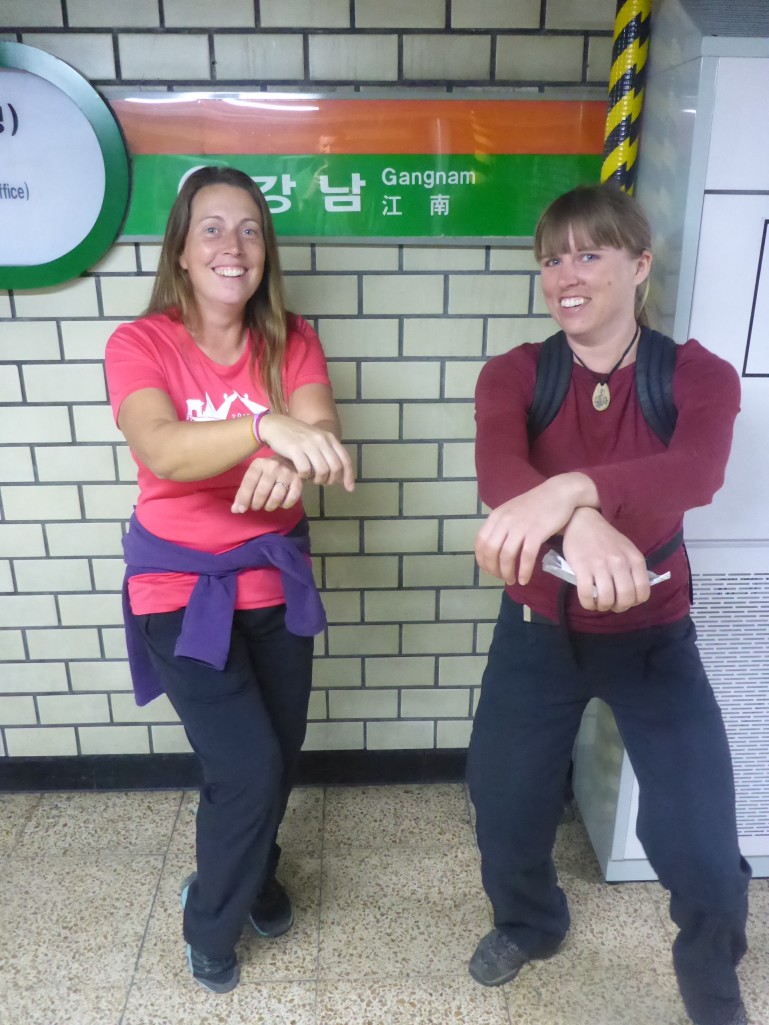

Where Pyongyang felt like a town from the 1950’s, Seoul is more like somewhere from the 2050’s: It’s clean, sharp and high tech. Roads are stacked on top of each other and where they’ve run out of room the road stands on stilts in the river. We get a better look at it from our bikes with Elbert the next day.





Our arrival in Seoul is perfectly timed to be able to take part in a huge group ride organised by the Korean cycle commuters club, so the panniers come off and the number boards go on. The ride leader introduces himself with several bows in a custom that we would be getting used to. We also have to get used to the frequent stops for group photos at various points along the route. Every landmark requires us to dismount and assemble for several snaps. The city sits alongside a bowl of hills which we climb up onto for great views and a fun descent back into the centre where we’re awarded t-shirts for our 40km epic. We feature a few times in this video produced by one of the riders. There’s also a photo book from our day out here.
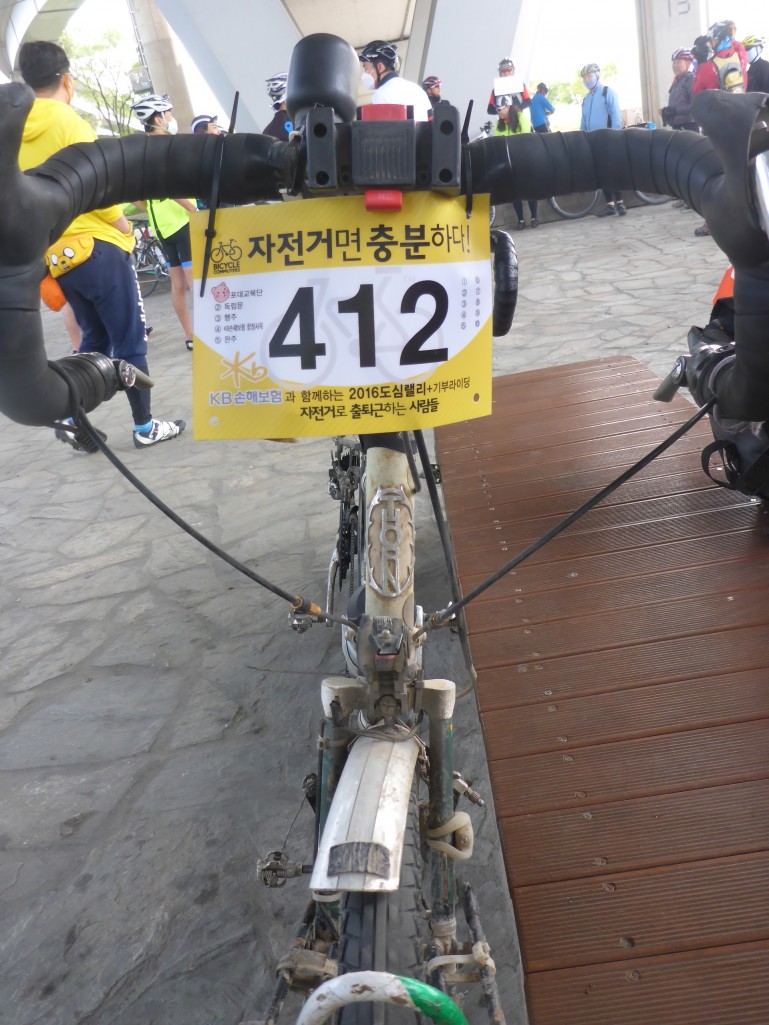

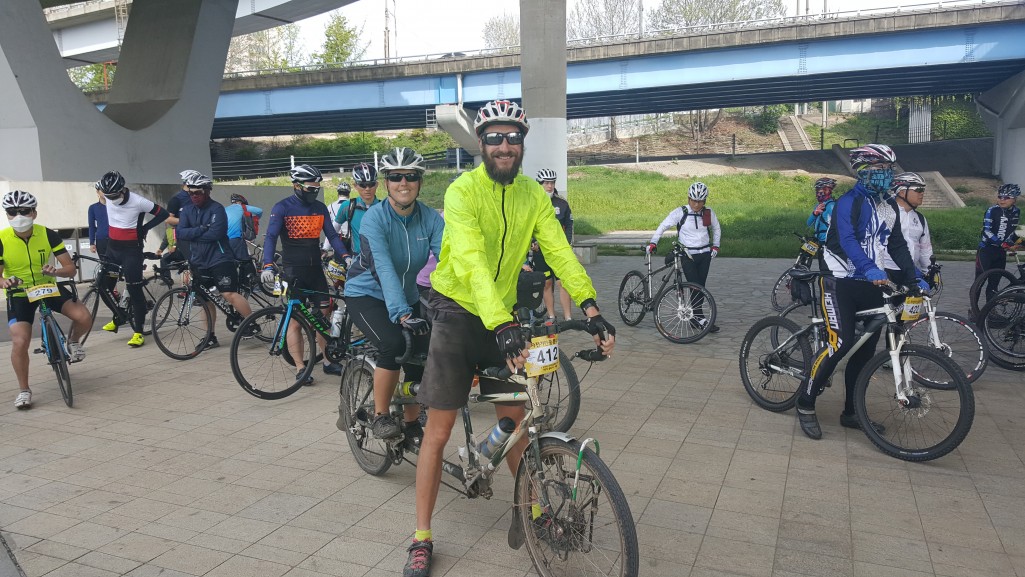


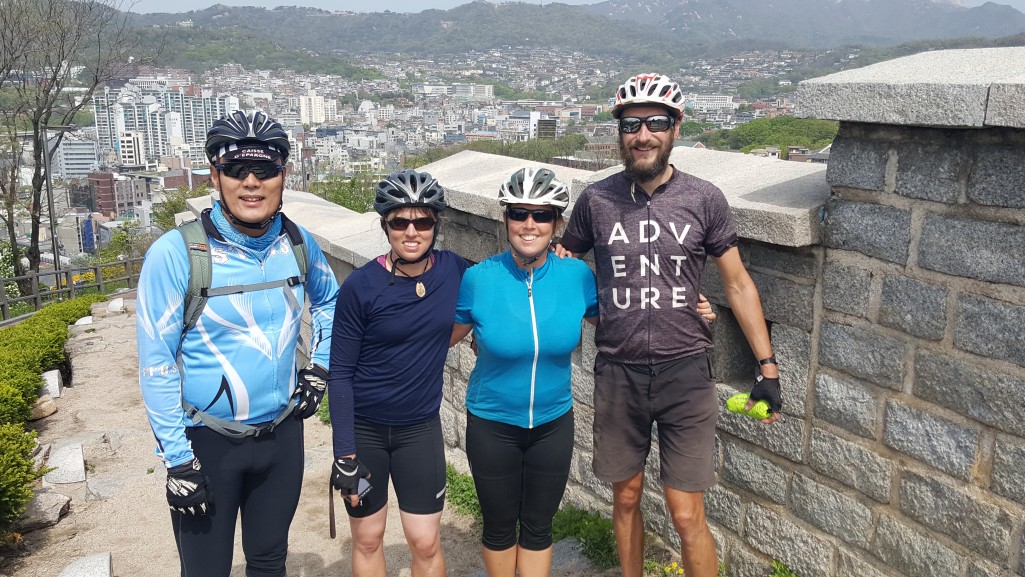
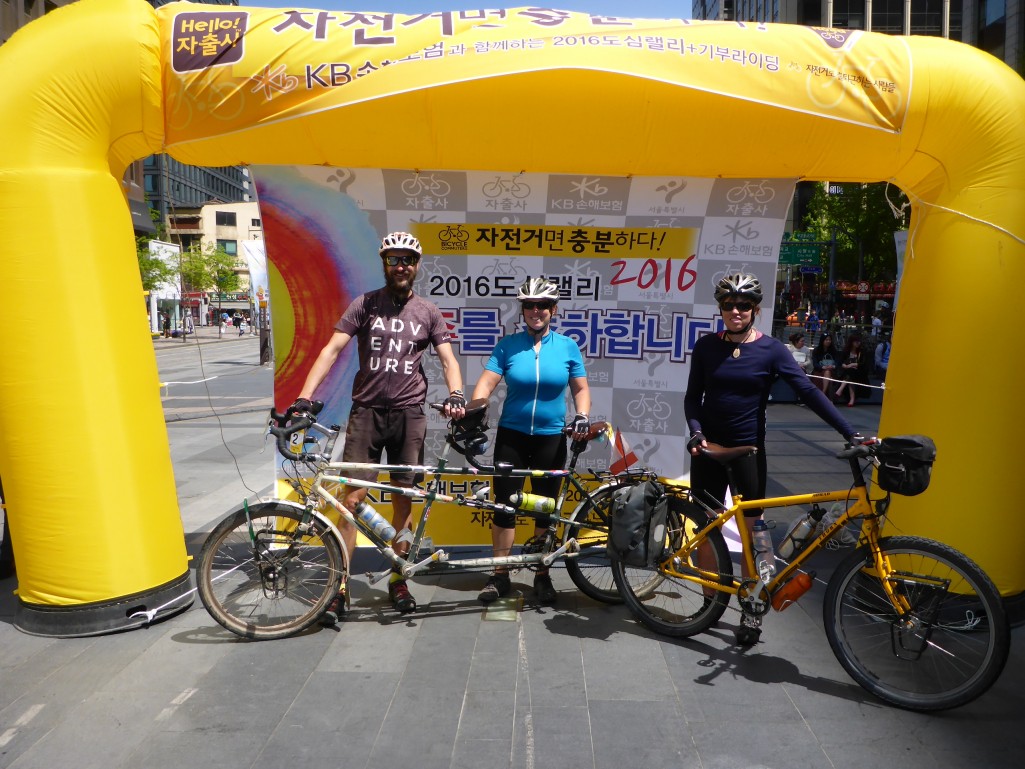
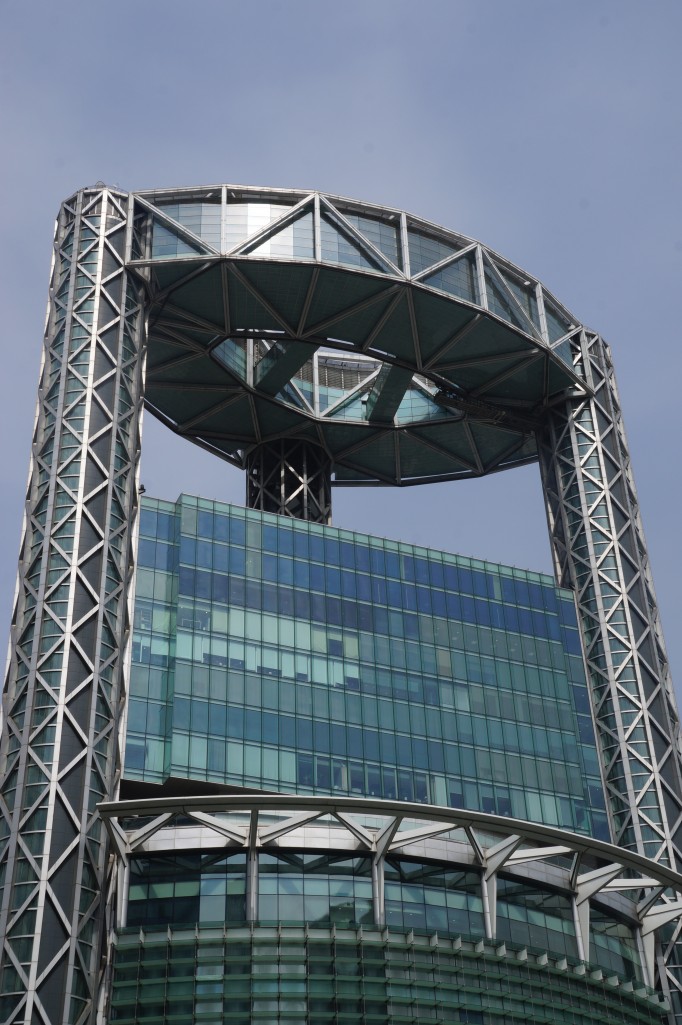
While spinning past immaculate streets, sleek cars and busy coffee shops it’s hard to imagine that this was once the poorer of the two halves of Korea. A concerted effort to improve education and the rapid growth of their high tech industries has allowed South Korea to develop at a phenomenal rate. It’s now the 11th largest economy in the world (based on GDP nominal) and has a GDP 80 times greater than its northern sibling. This difference will cause a huge shock to people on both sides of the DMZ if and when Korea is reunited and is one reason why many young people in the south don’t want it to happen. The cost to the south will be enormous and could well cripple them for years.
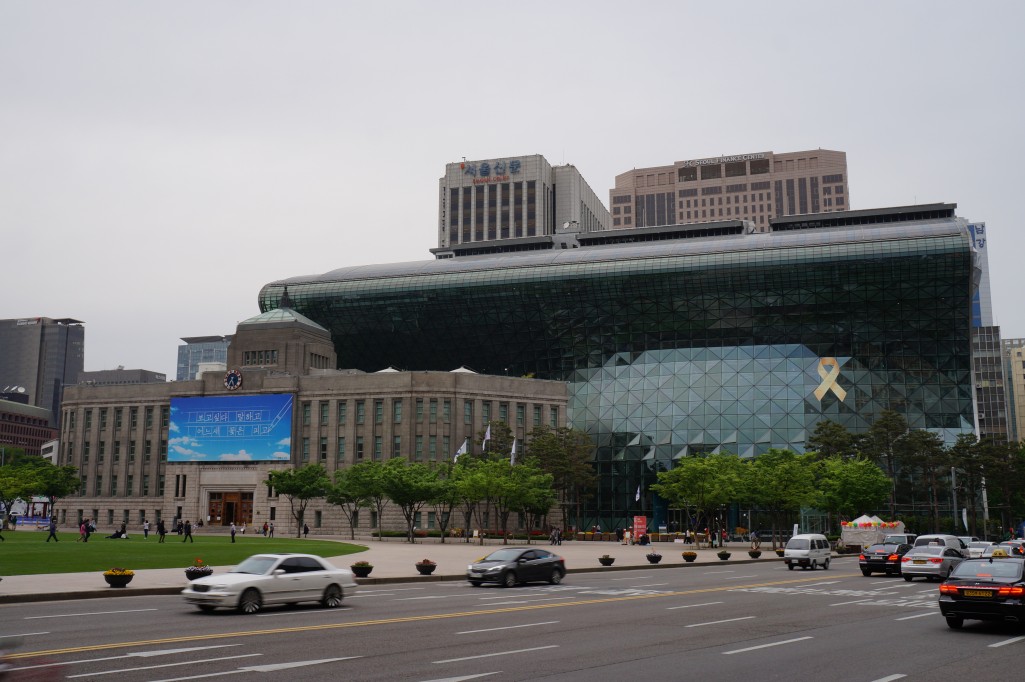
We’re in an unusual position to be able to visit the DMZ from both sides now so we book a tour to return to the border but from a different direction. It’s a strict affair with two days notice required for security checks and a dress code insisting on a collared shirt and no ripped jeans. They’re afraid that the North will use photos of scruffy tourists for propaganda purposes.
On the way there we stop at the war museum which tells a very different story to the war museum we visited in Pyongyang. However it’s no less dramatic and the language used is equally as strong just replacing the North as the aggressors instead of the US imperialist forces. There doesn’t seem to be a balanced view on the conflict with both the North and South pointing fingers and laying the blame with equal levels of enthusiasm.

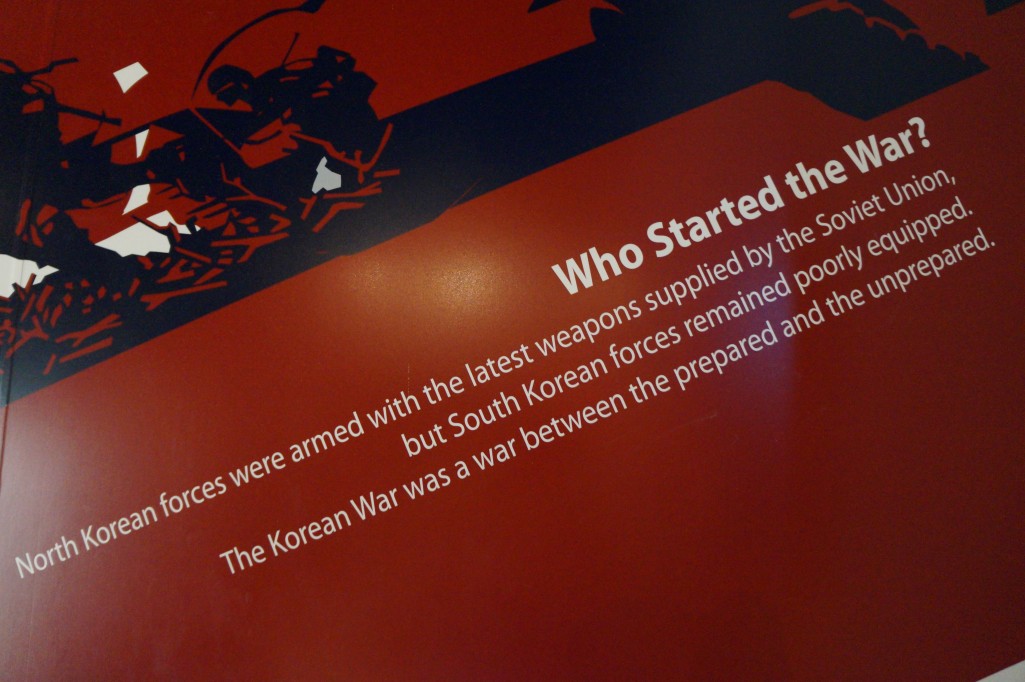
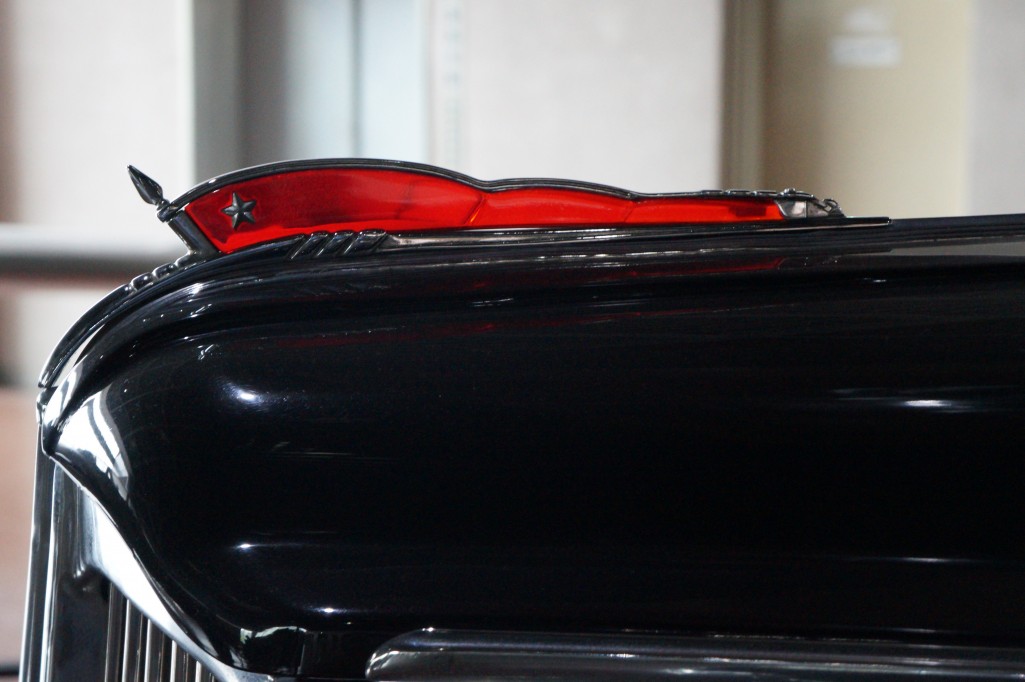
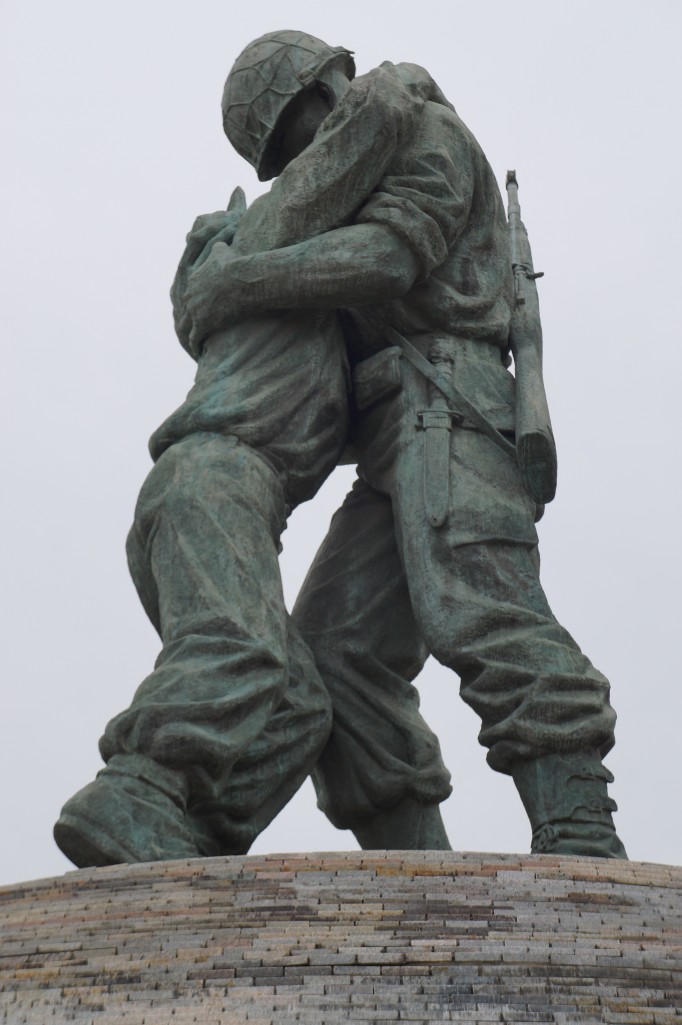
We stop once more before reaching the DMZ to view a railway bridge that ends just before the border. It’s poignant in that it highlights the fact that South Korea is effectively an island. Without the DMZ this line could connect with Beijing giving access to the whole of Asia and beyond. As it stands, the only way in and out is by boat or plane.

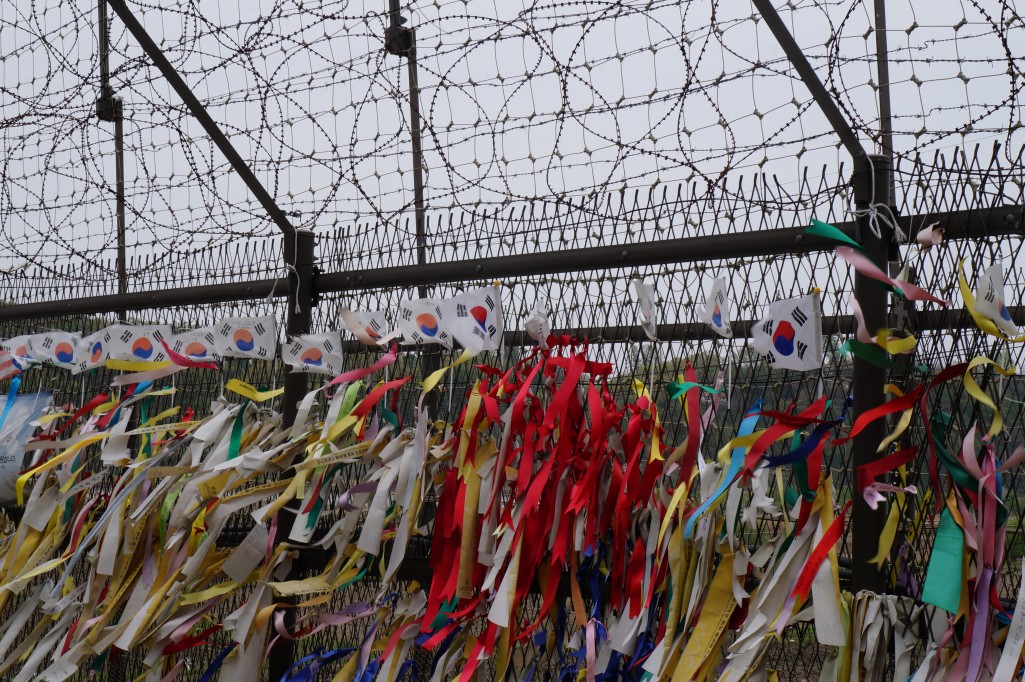

At the DMZ there are several passport checks and a clothing inspection. We’re then transferred onto a military bus to get to the joint security area (JSA) and escorted through a large building to arrive at the blue huts that straddle the border itself. South Korean soldiers stand with their feet wide apart, fists clenched and staring across at their counterparts on the northern side. We’re ushered into the central hut but unlike the last time we were here we’re not allowed to sit at the negotiating table in the centre and the atmosphere is much more tense. Our guide warns us not to get too close to the door at the far end “in case someone from the north opens it and tries to grab you”. We stood at this extract same spot when we visited from the DPRK but it’s taken half a day on a bus, a day on a train, two days of cycling, 25 hours on a ferry and 2 hours on another bus to be able to get here from the south.

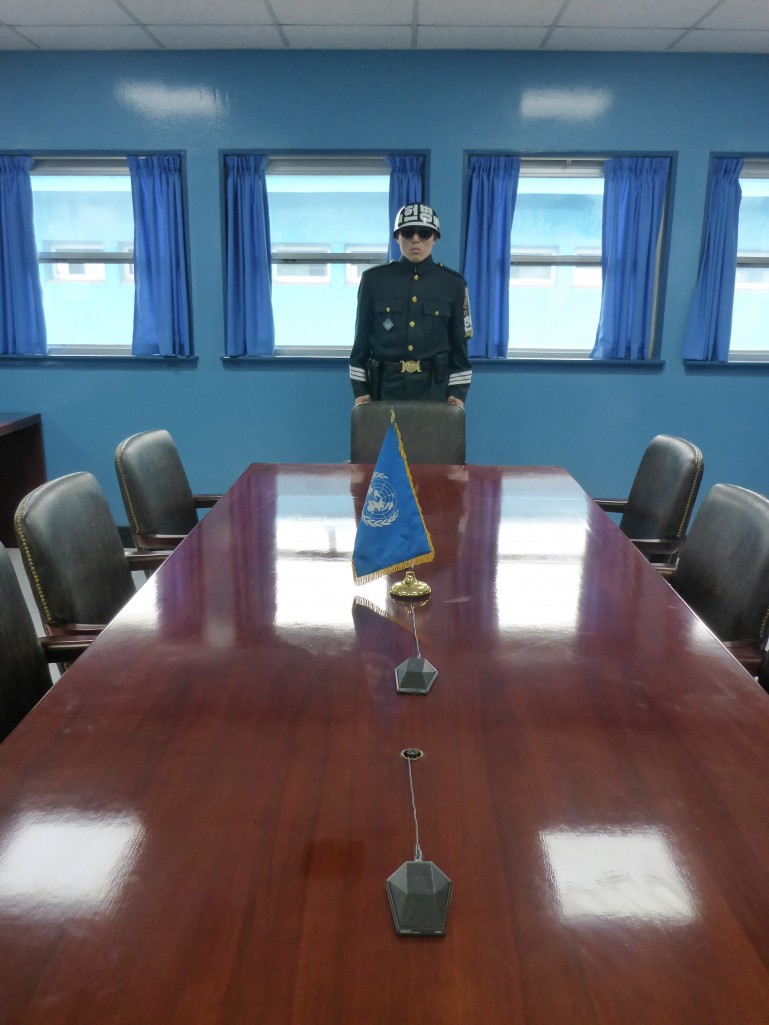
On our way out I mention to our military escort that we’d been to Pyongyang and visited the JSA from there. He’s amazed and didn’t realise that it’s possible to get a train from Beijing to Pyongyang. He tells me that the North will always be a place of intrigue and danger that he’ll never be able to visit unless something drastic changes but from what we’ve seen the South are a lot more afraid of the North than the other way around.
Before we leave Seoul the bike needs some TLC so gets treated to a new chain and cassette, the last set having served us well for the last 13,000km. The bike shop is out of stock of our preferred Schwalbe Marathon tyres but I spot a pair that are hardly worn in a pile of used tyres on the street. They tell me I can have them for nothing which saves them having to dispose of them and saves us a stack of cash.
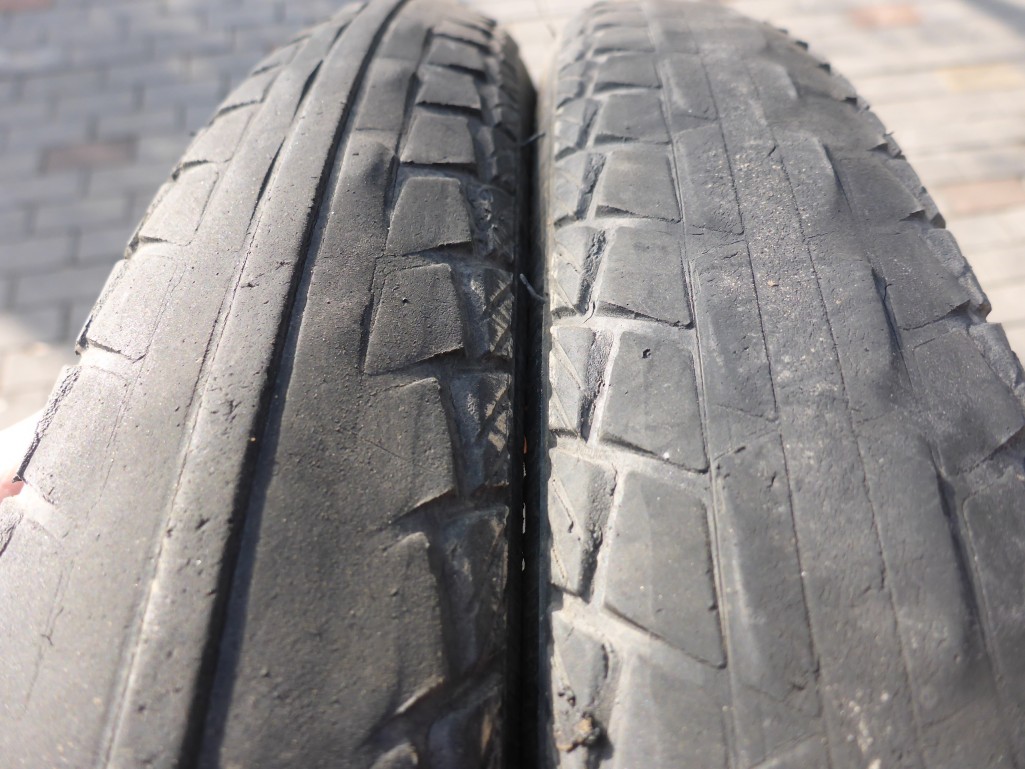
We also collect our Korean Bike Passports. Across the country are several purpose built bike roads and at various points you can collect stamps to prove you’ve covered a certain distance. Complete the length of one path and you get a shiny sticker in your Bike Passport. Complete the entire cross country route from Incheon to Busan and you get a medal and a certificate. With the challenge set and the reward waiting for us in Busan the three of us are ready to start collecting those stamps!
